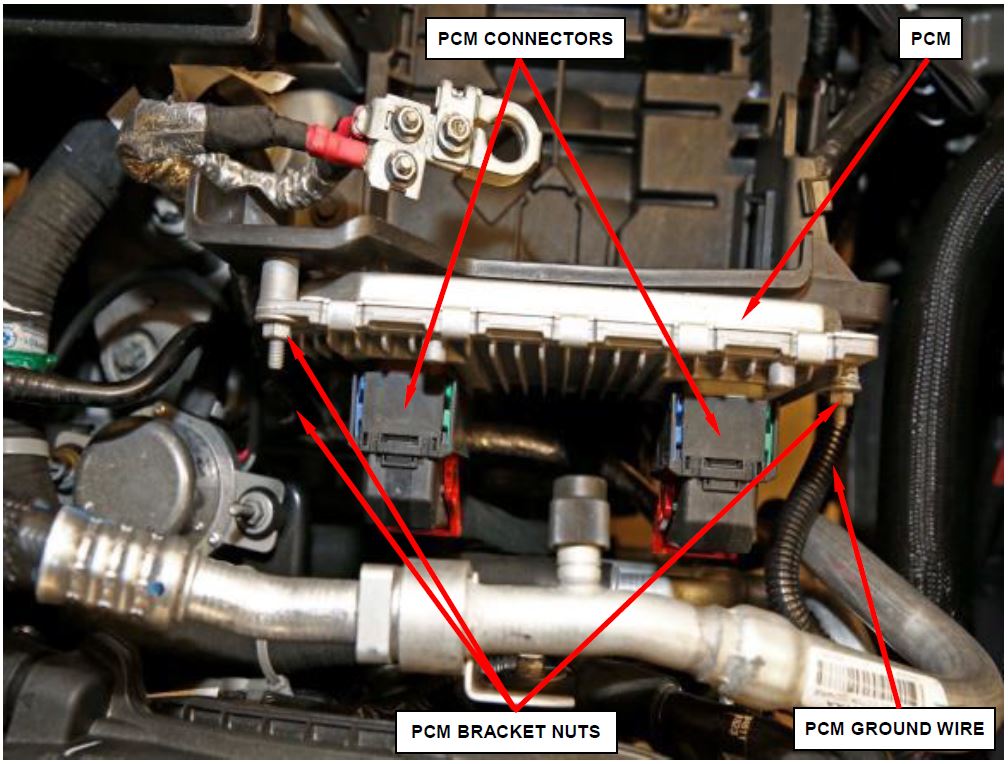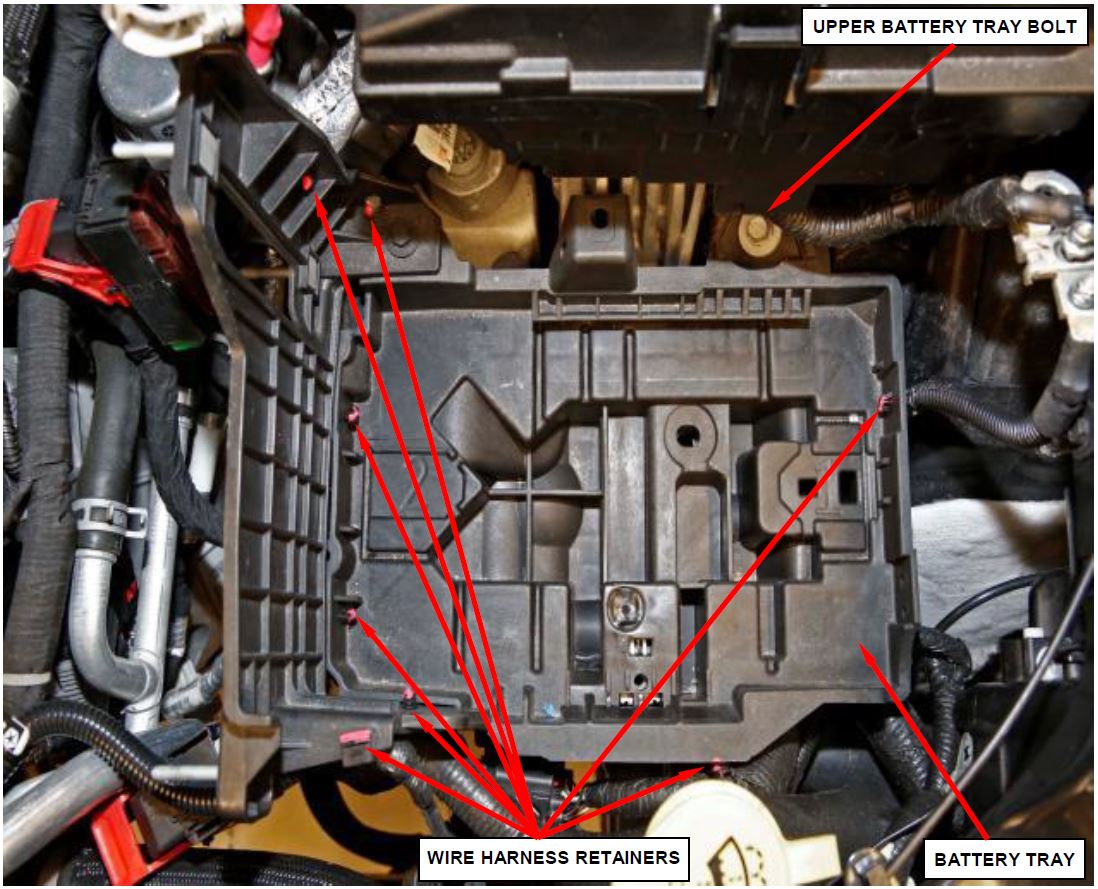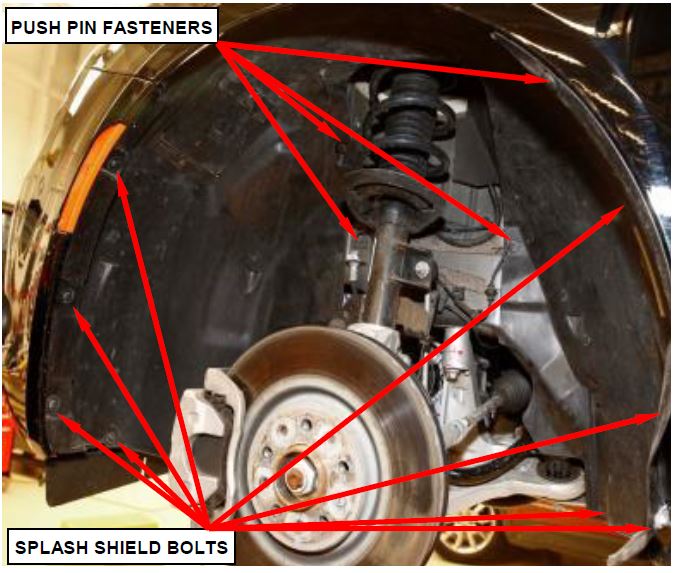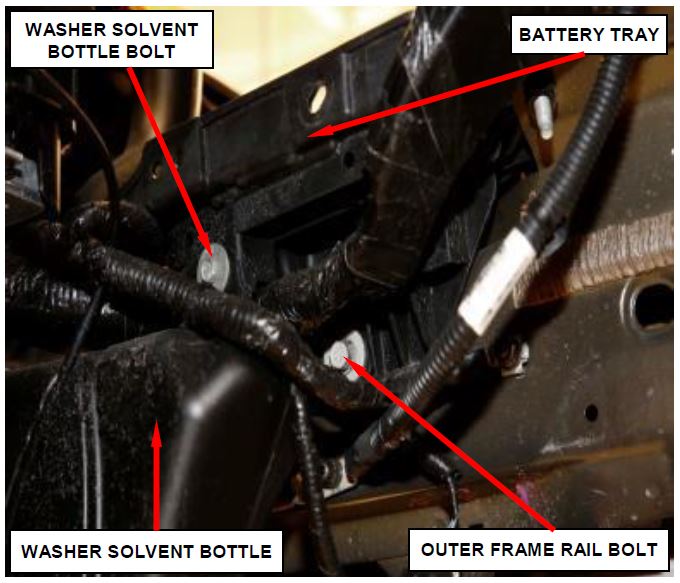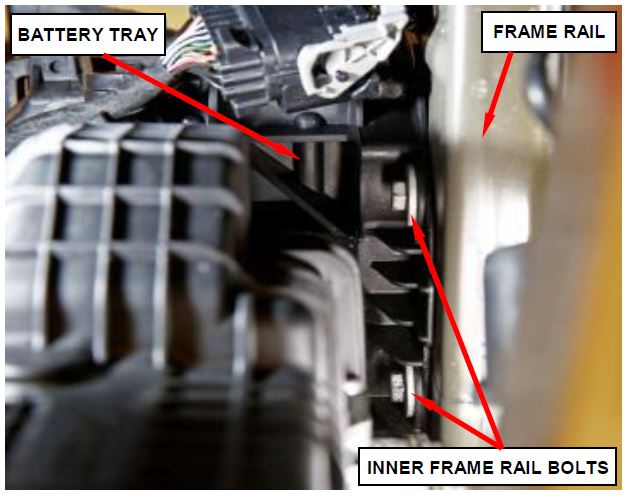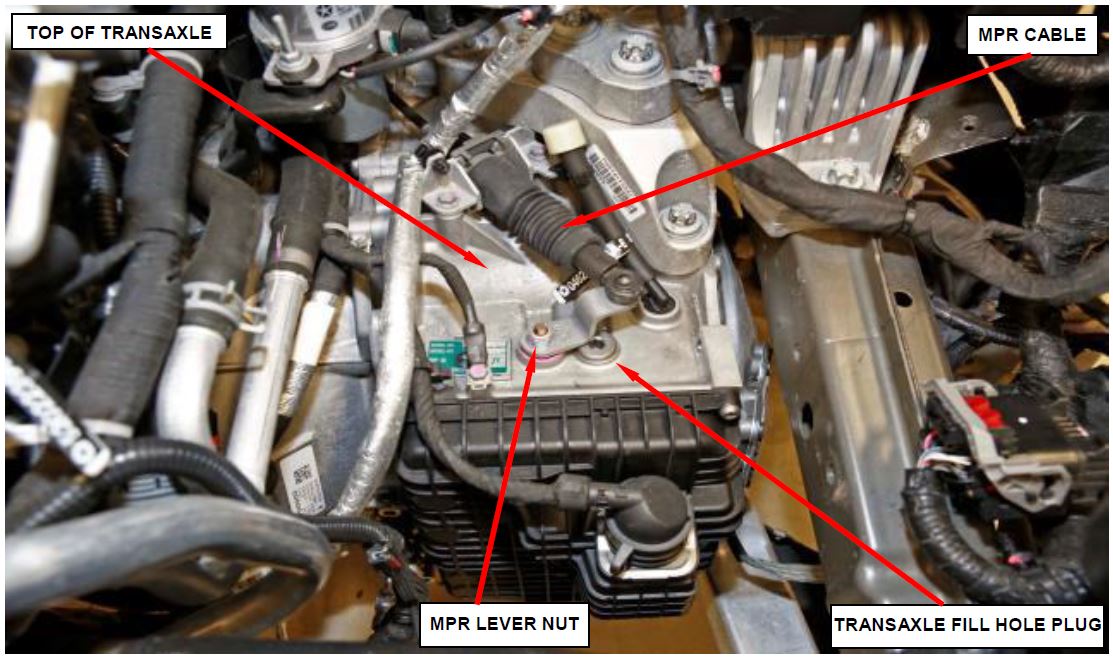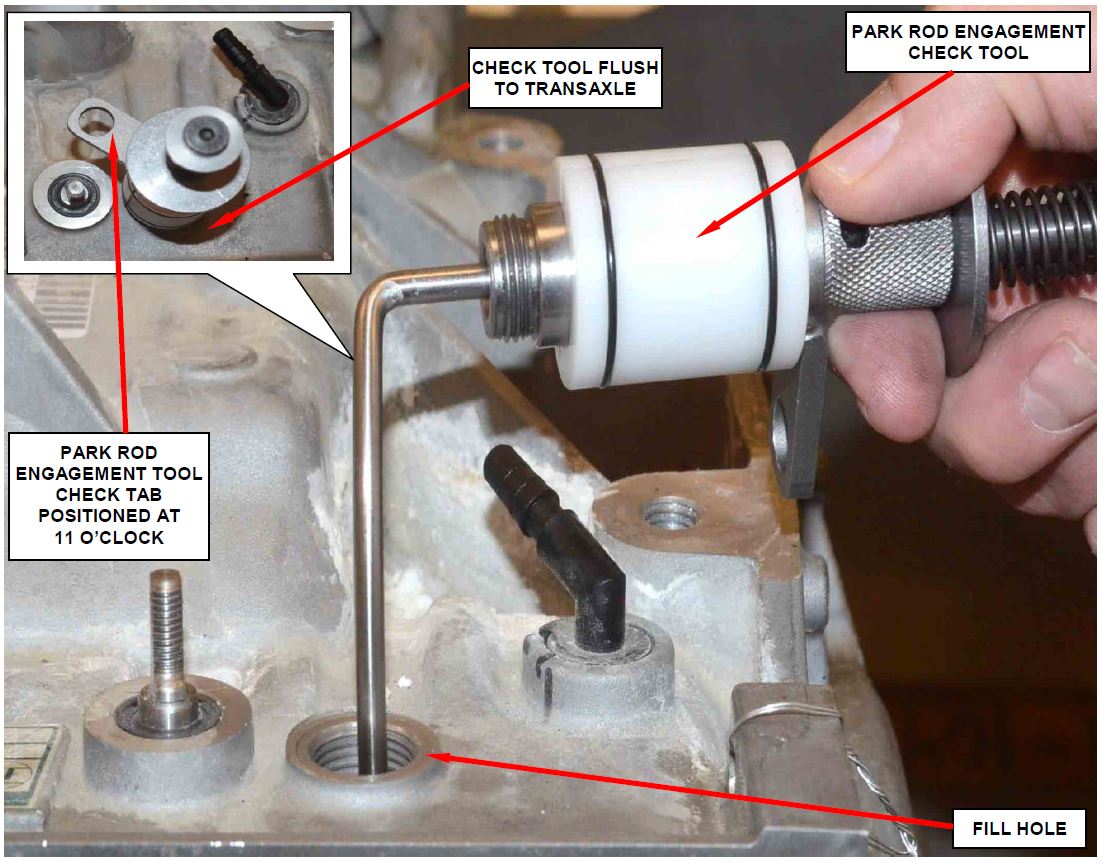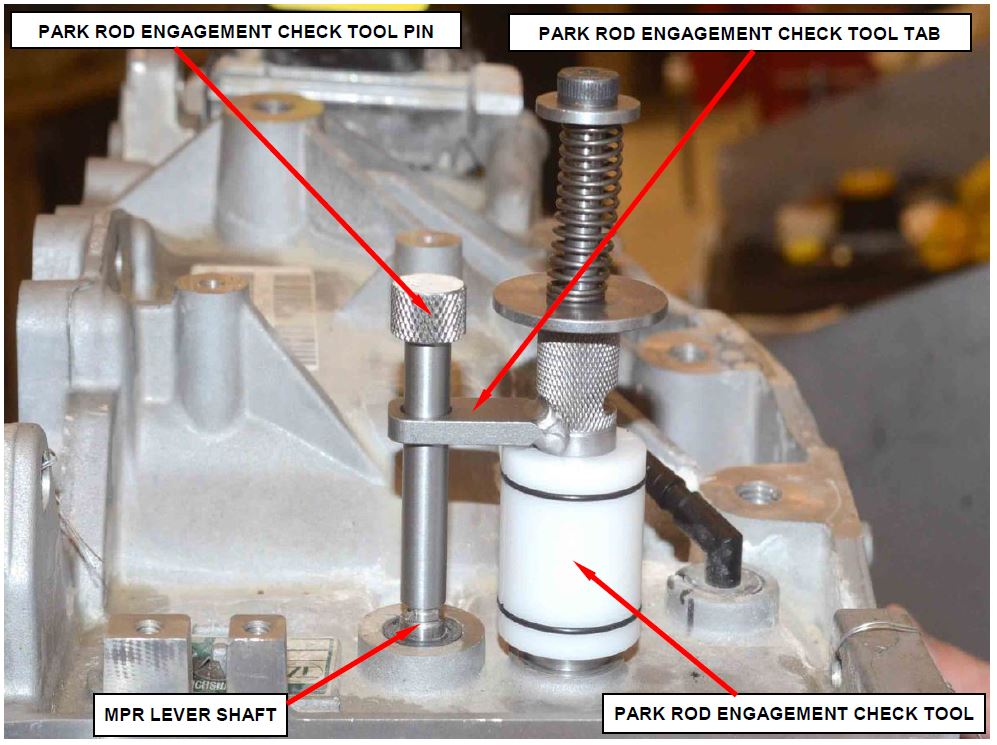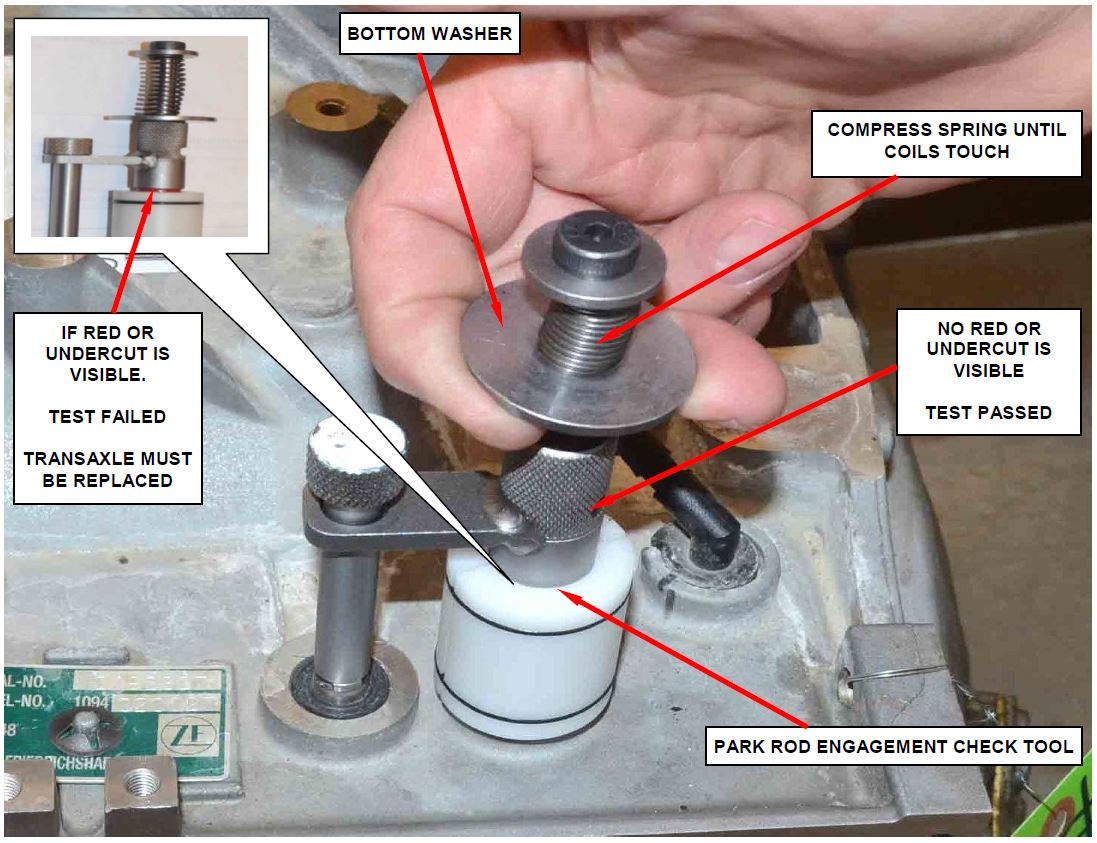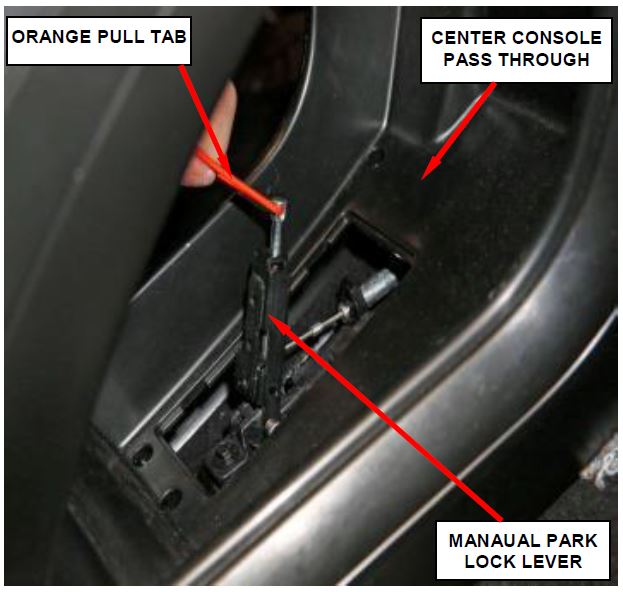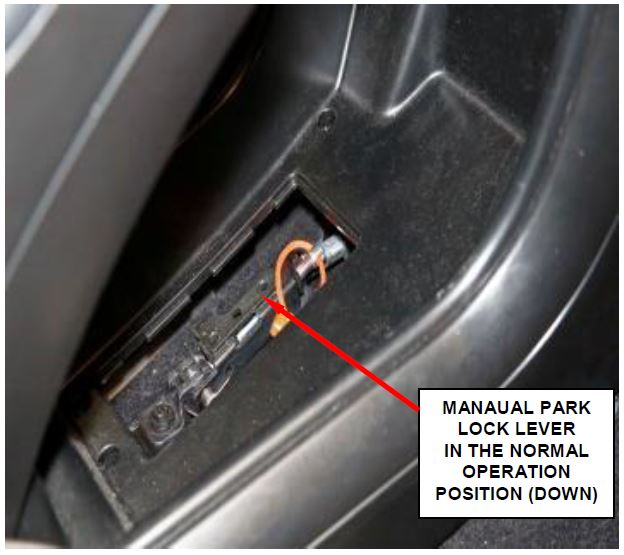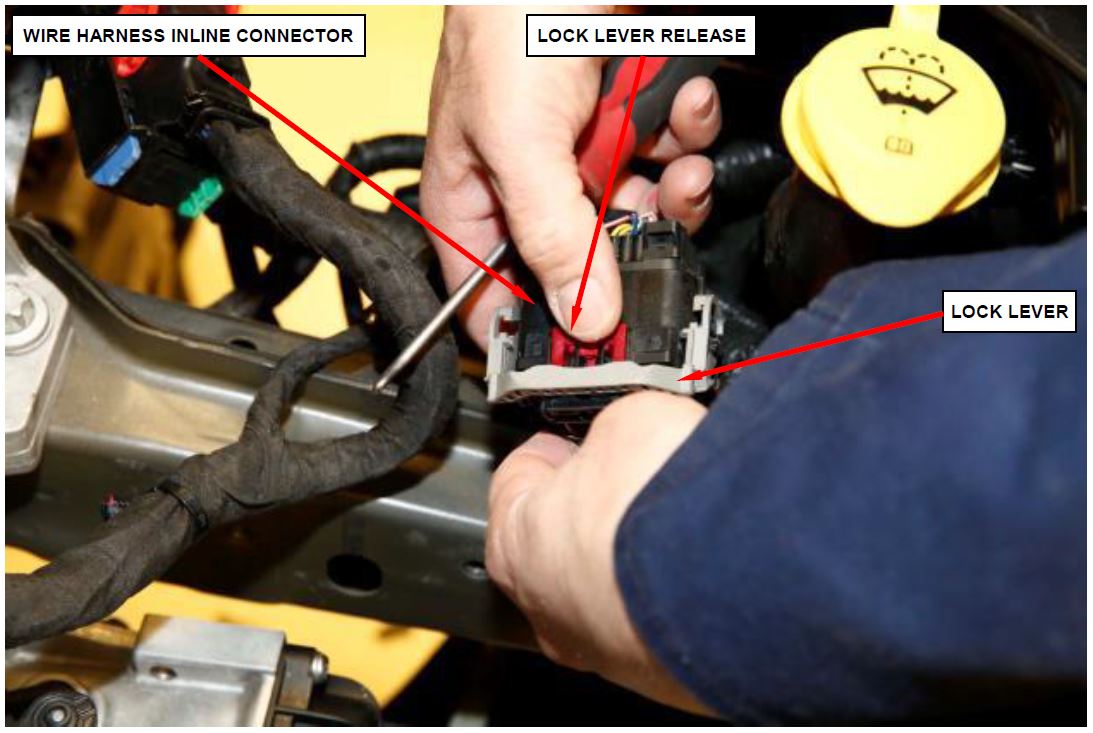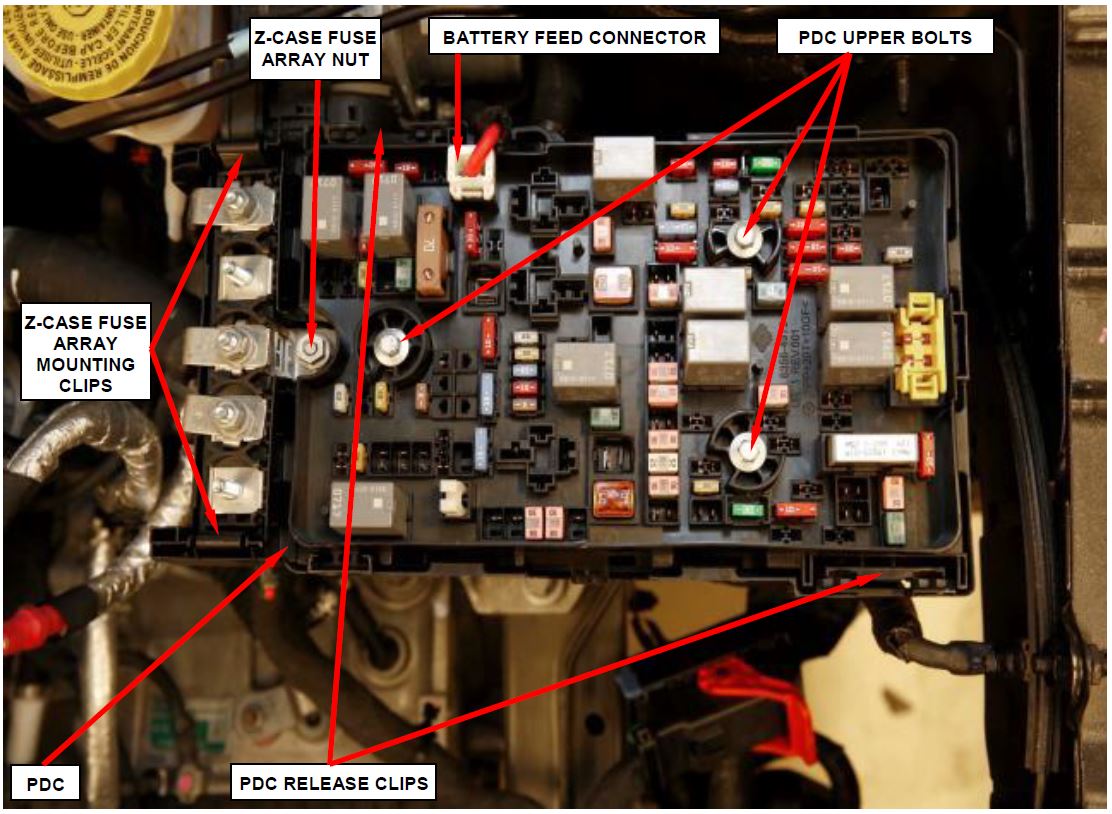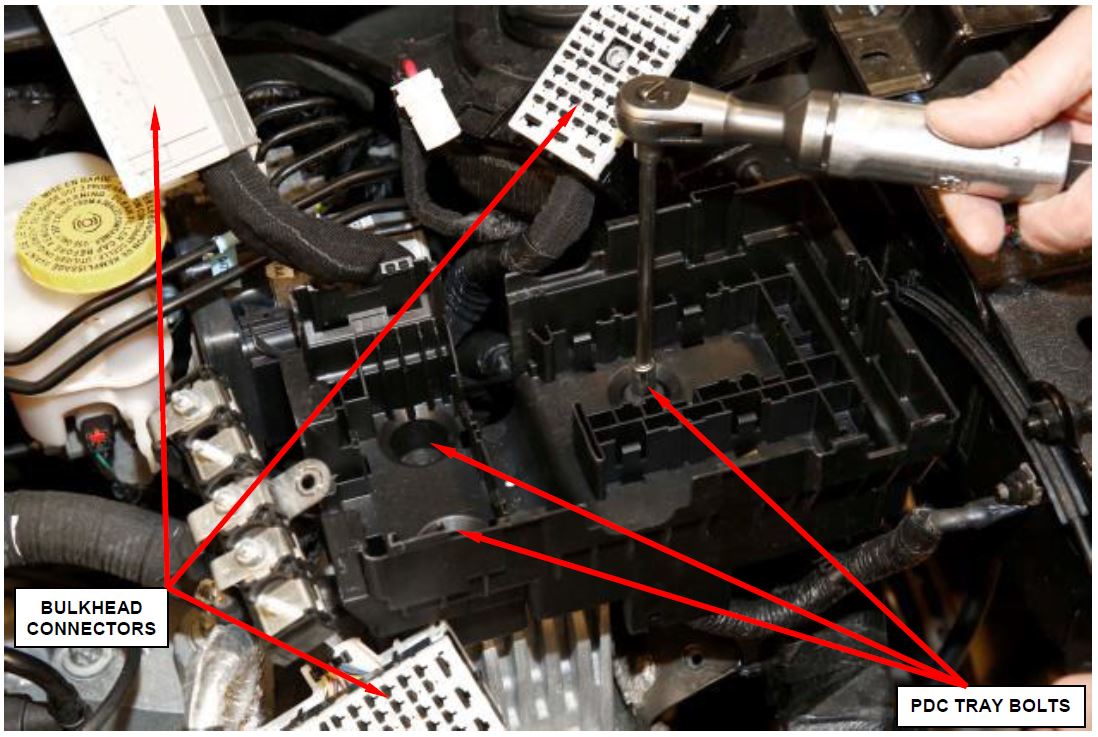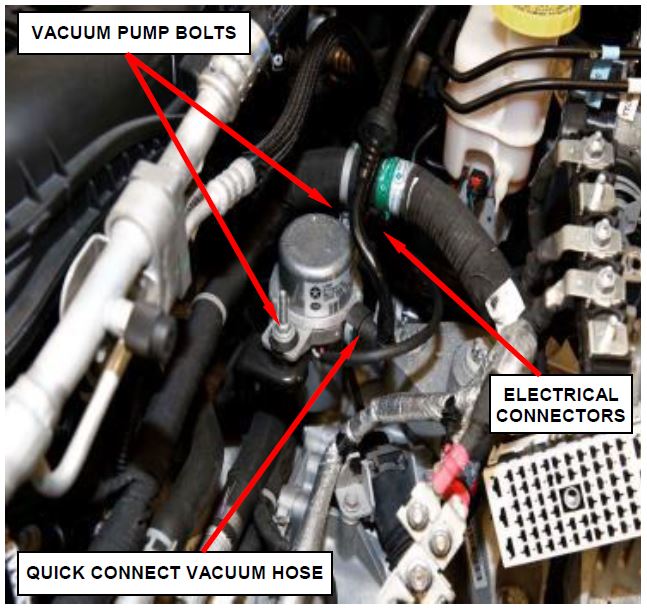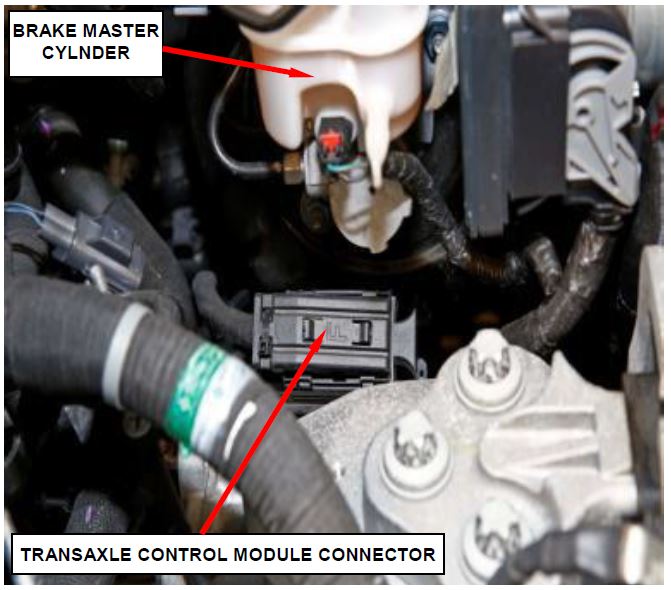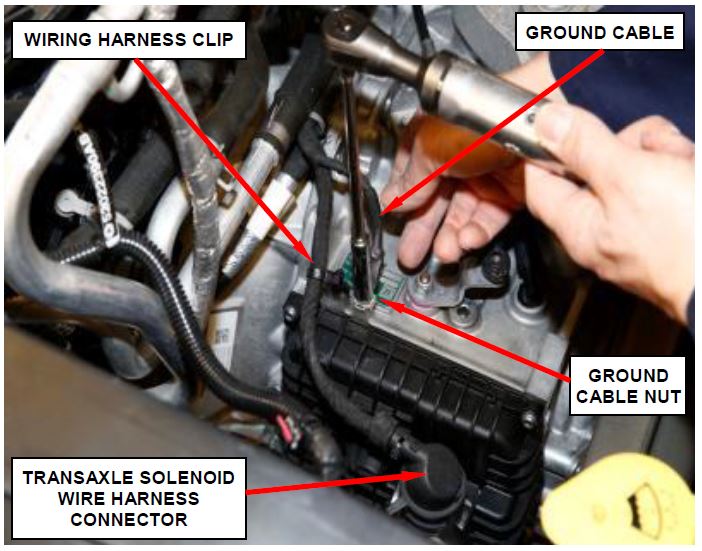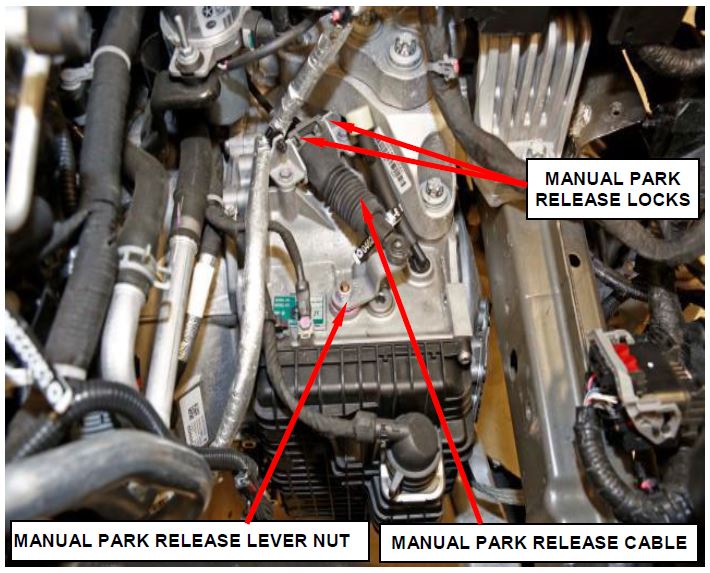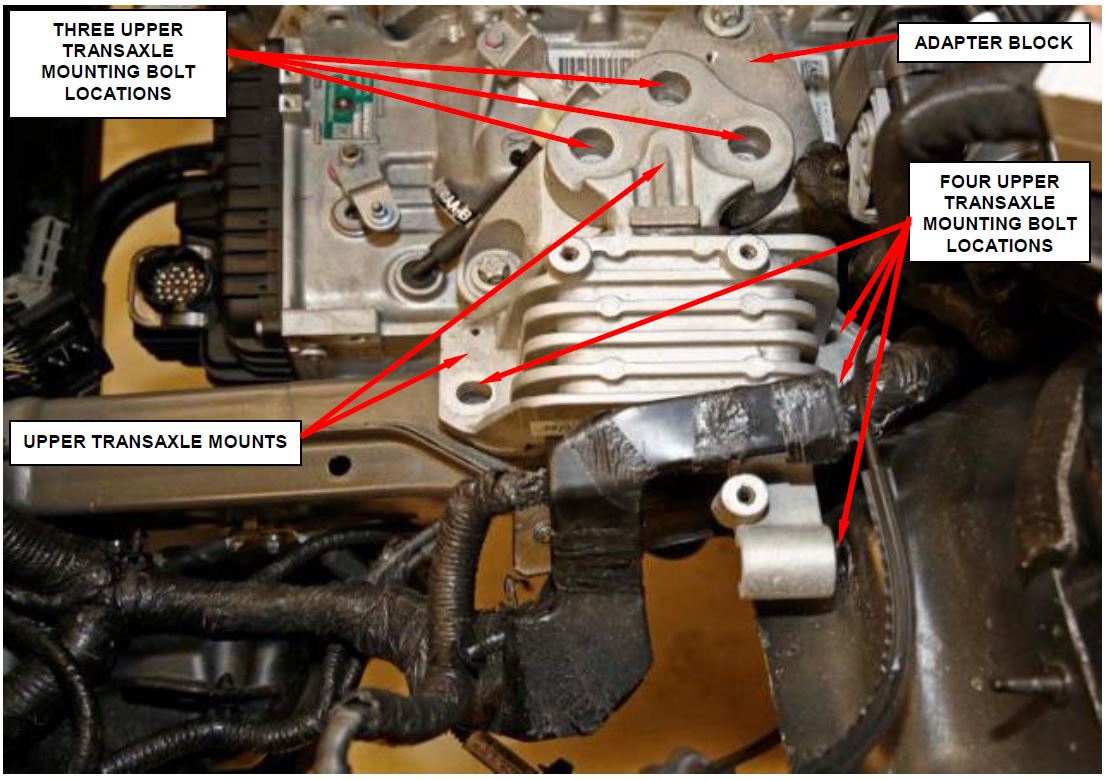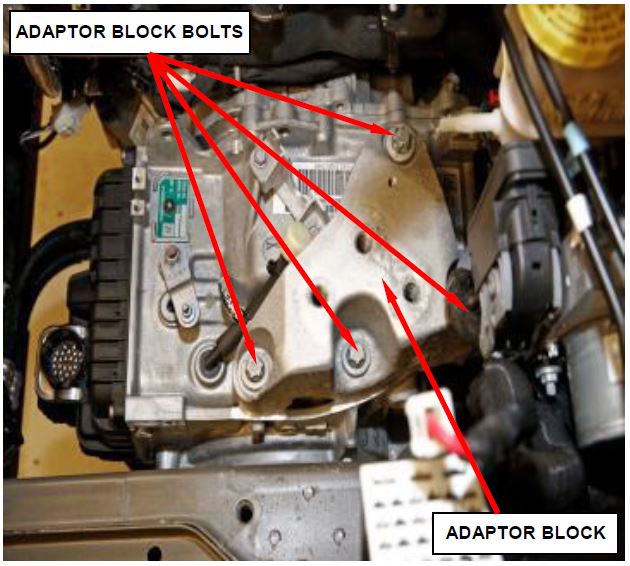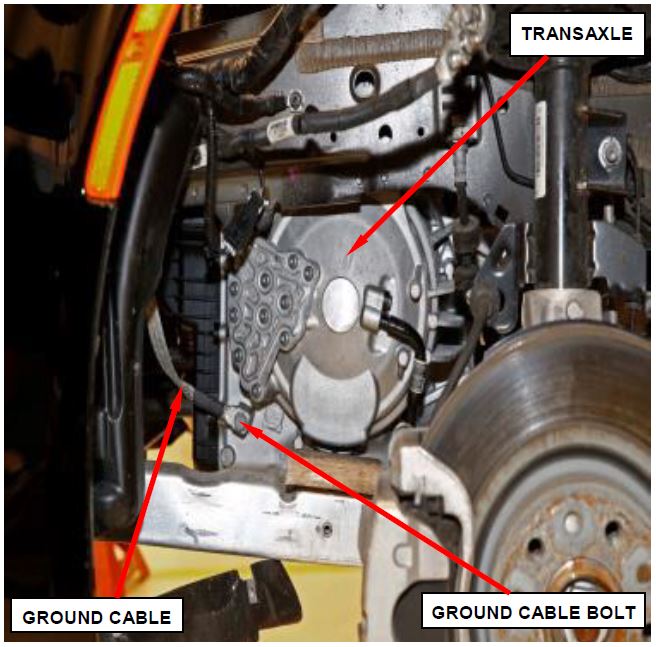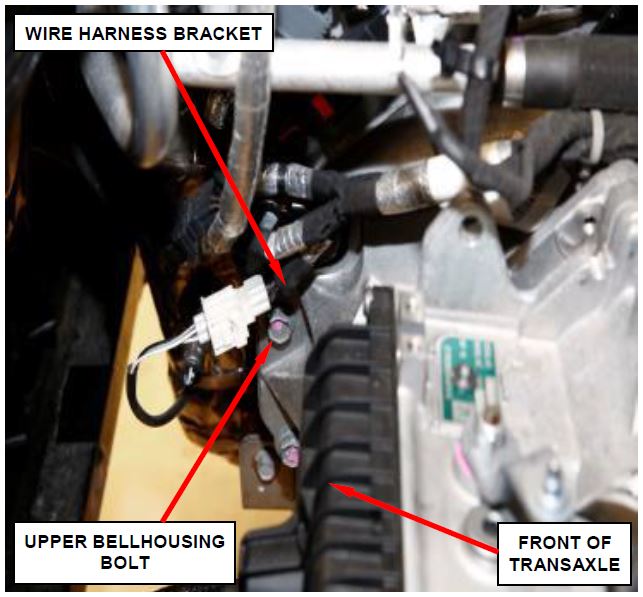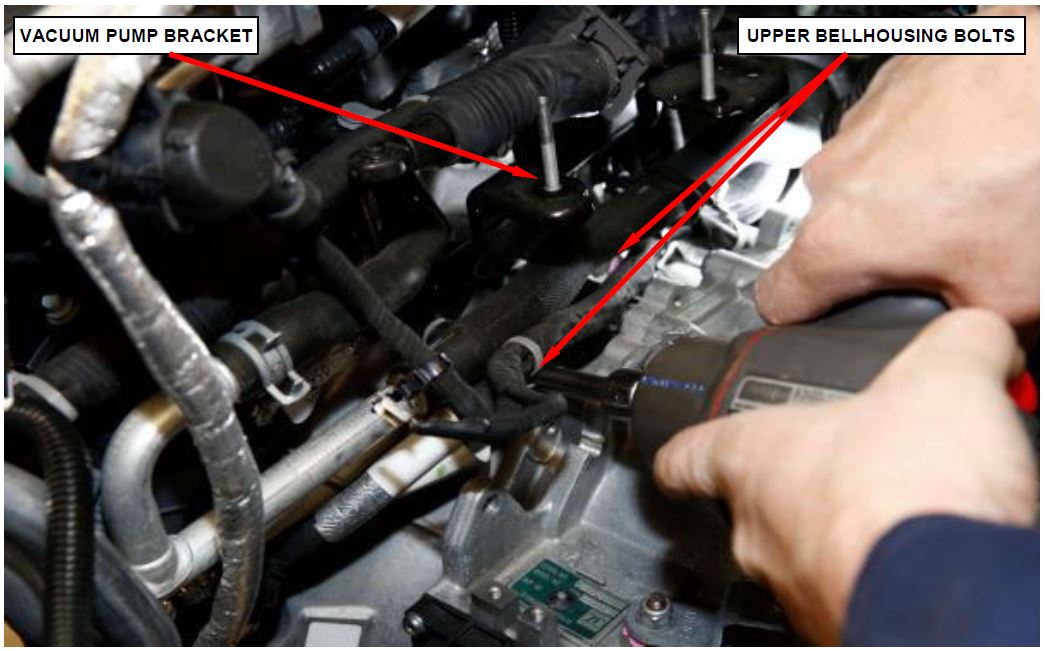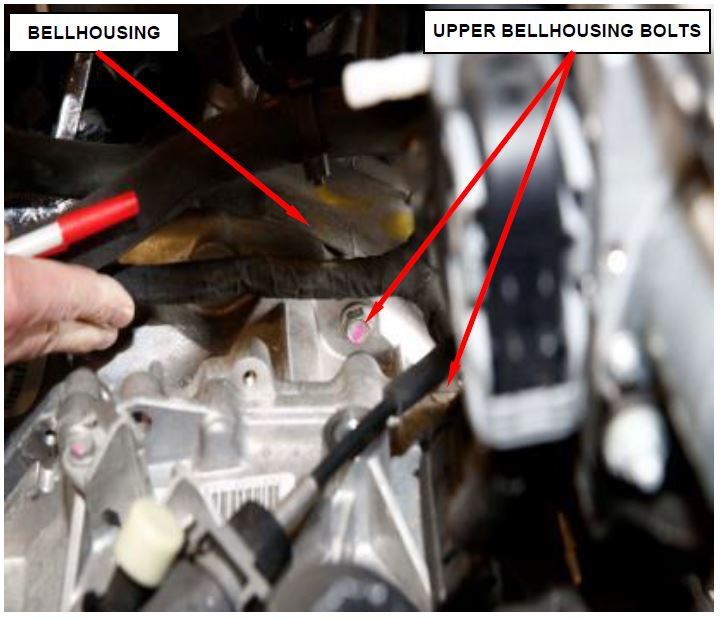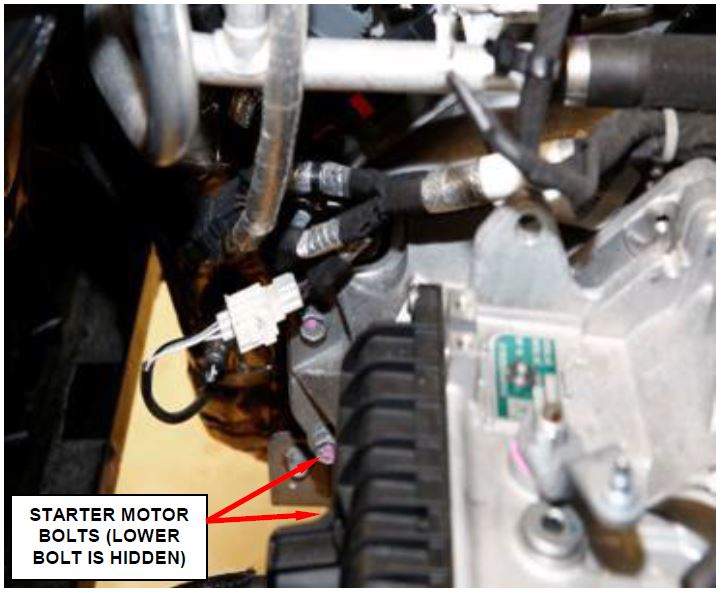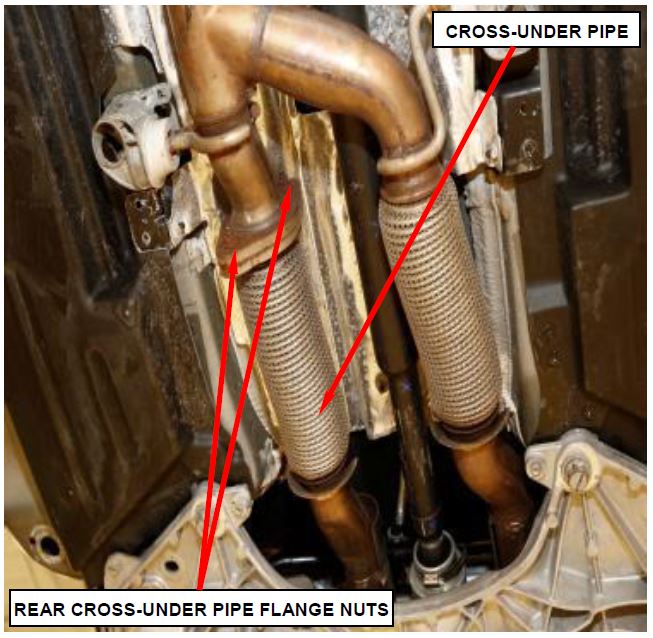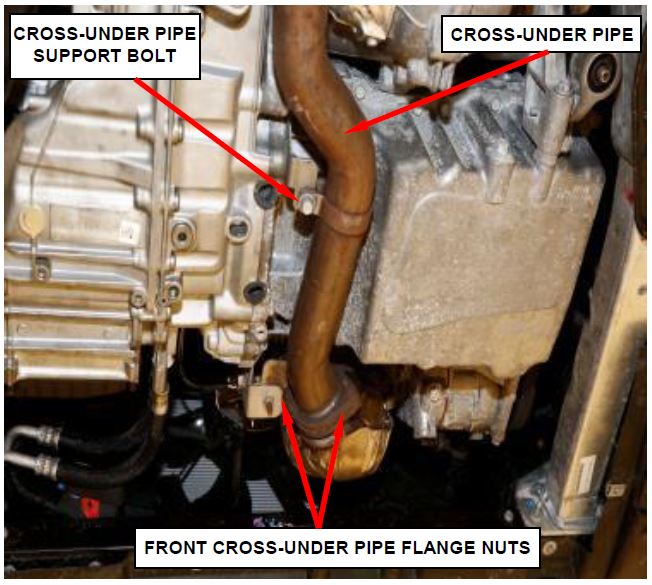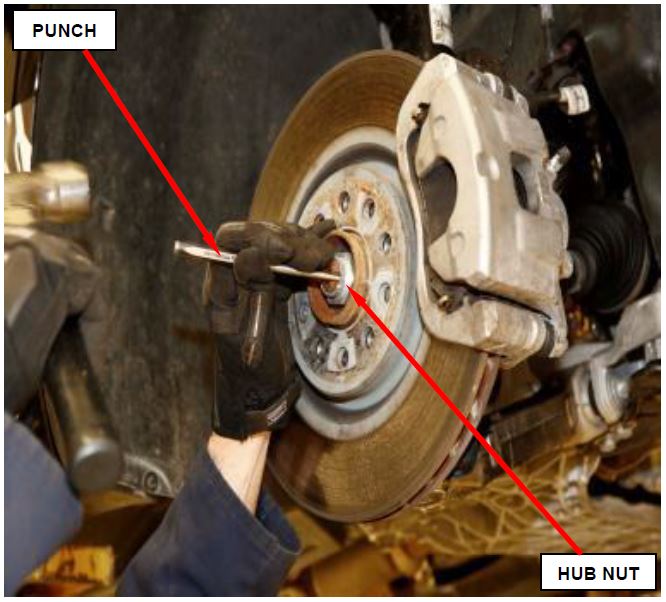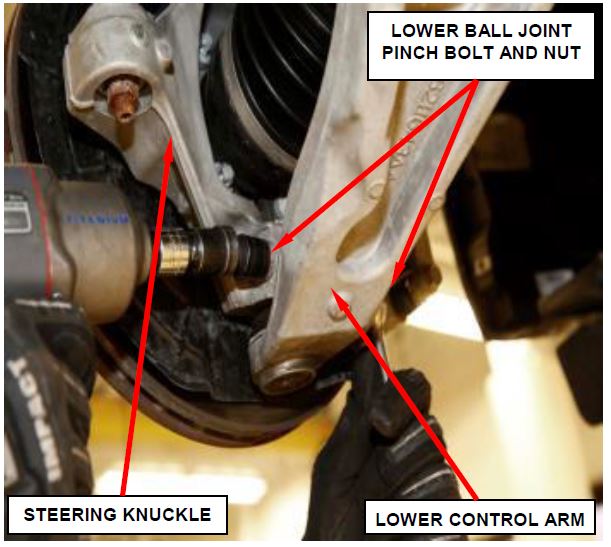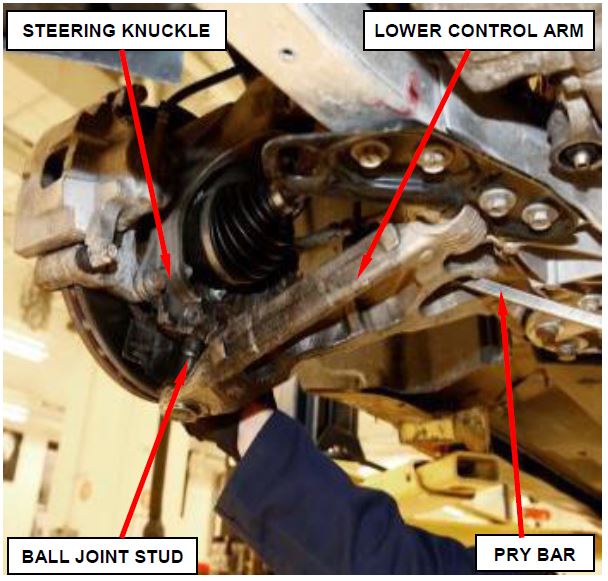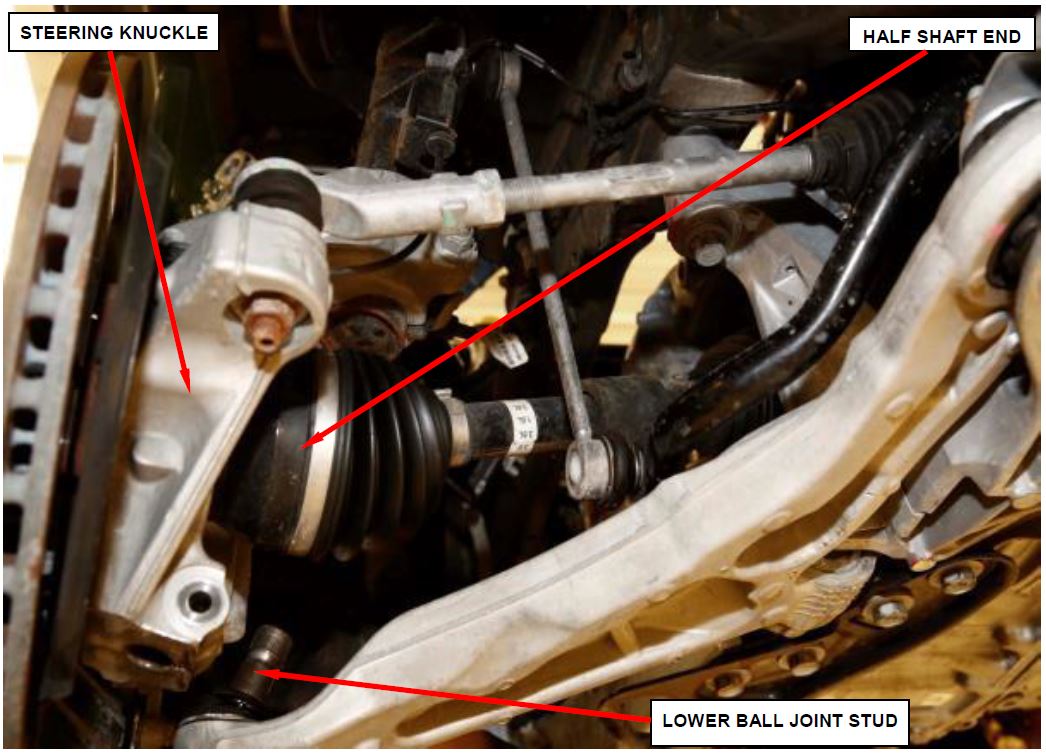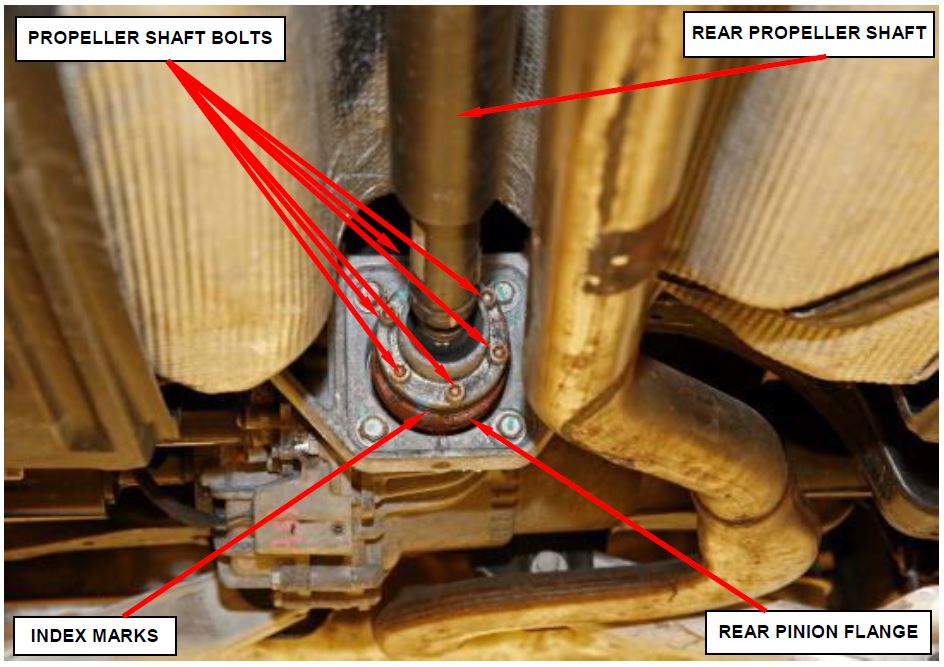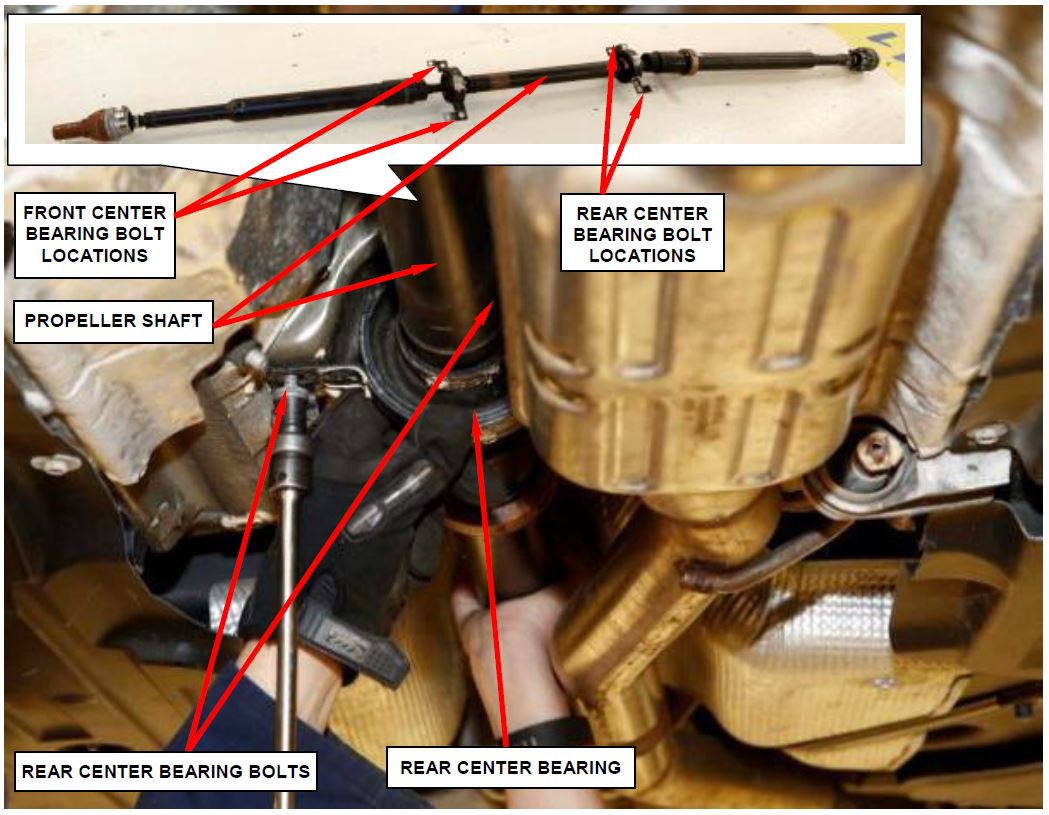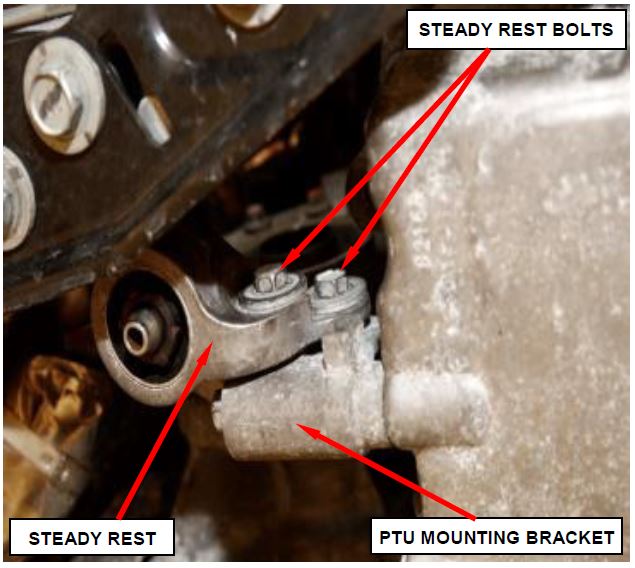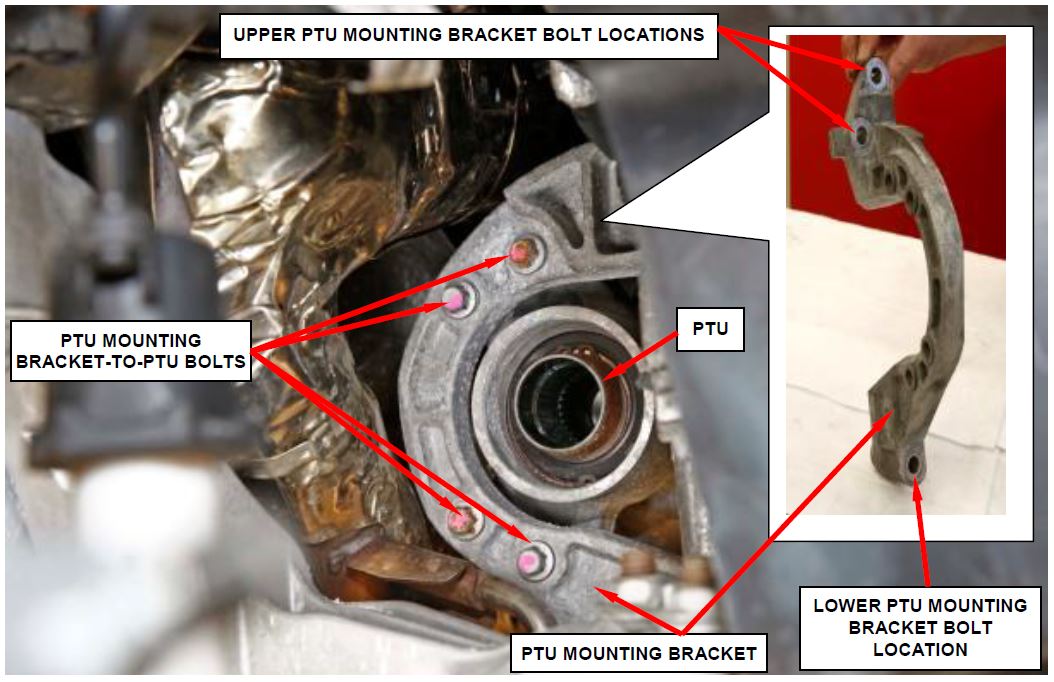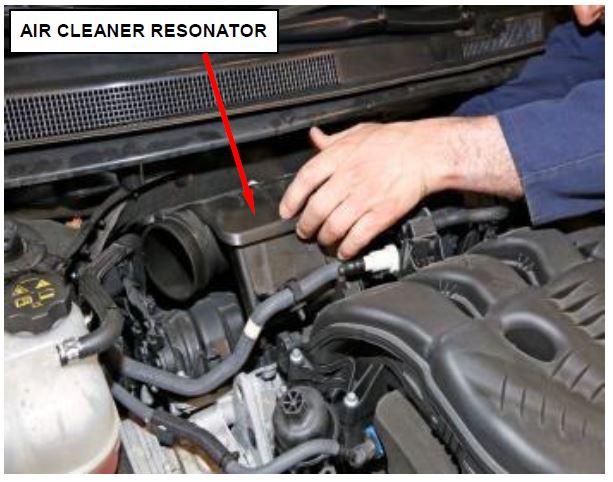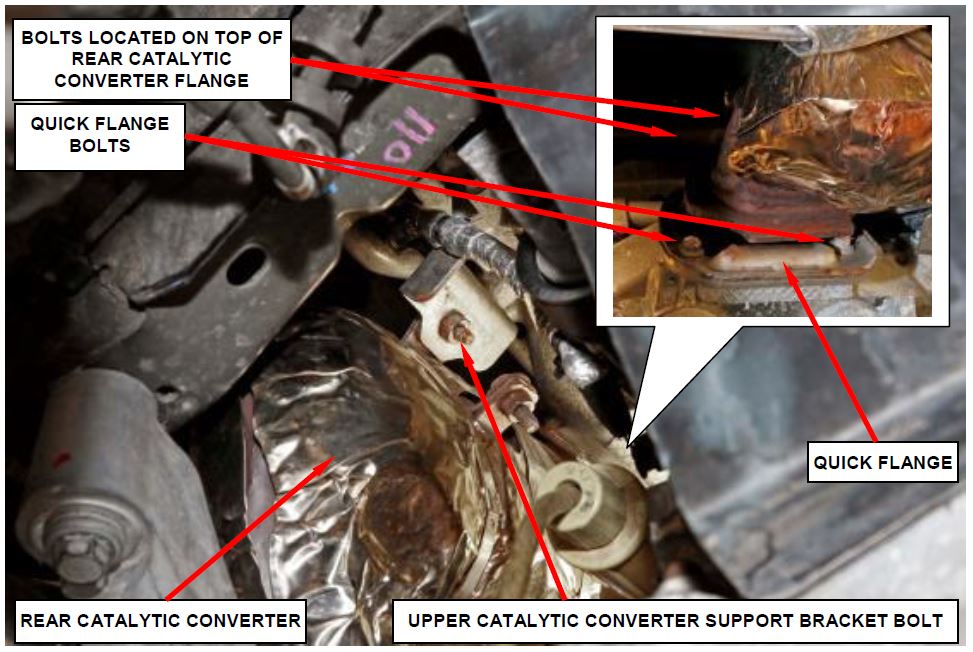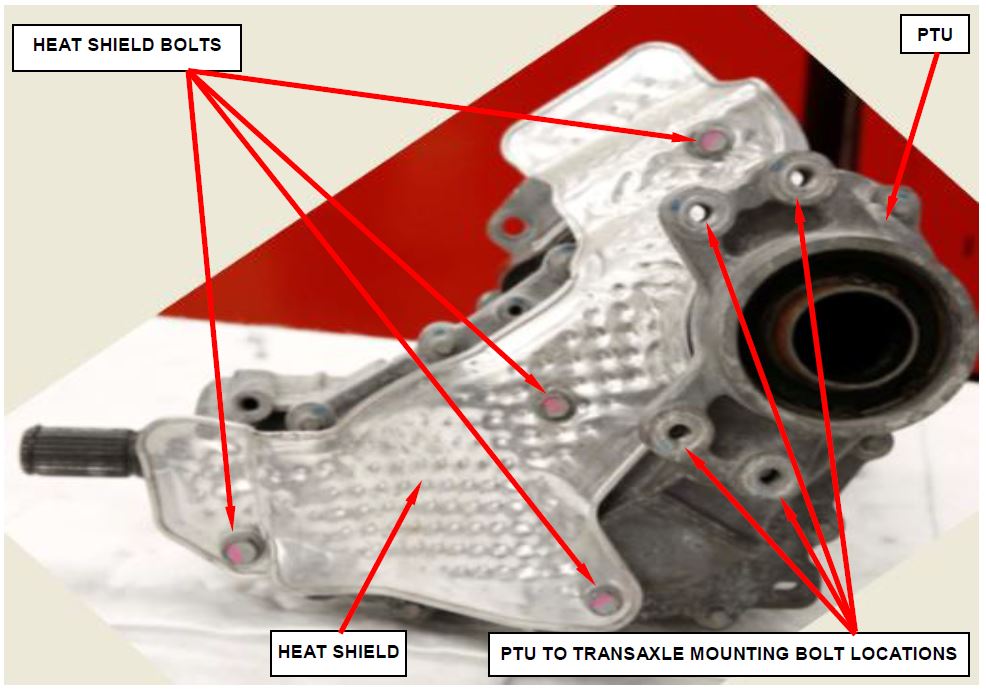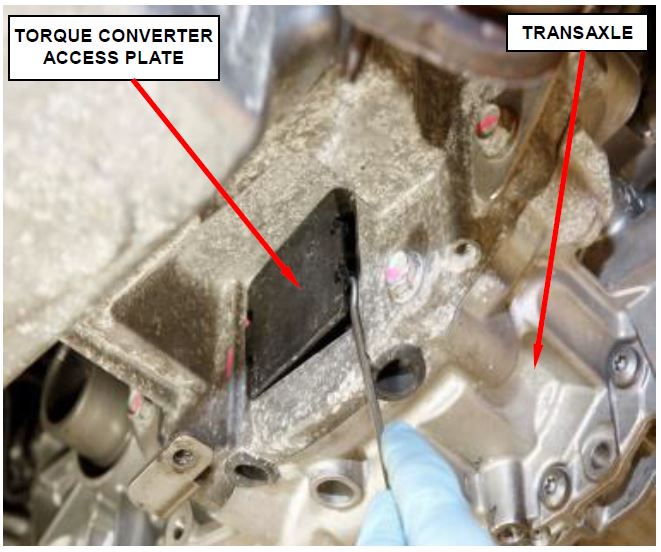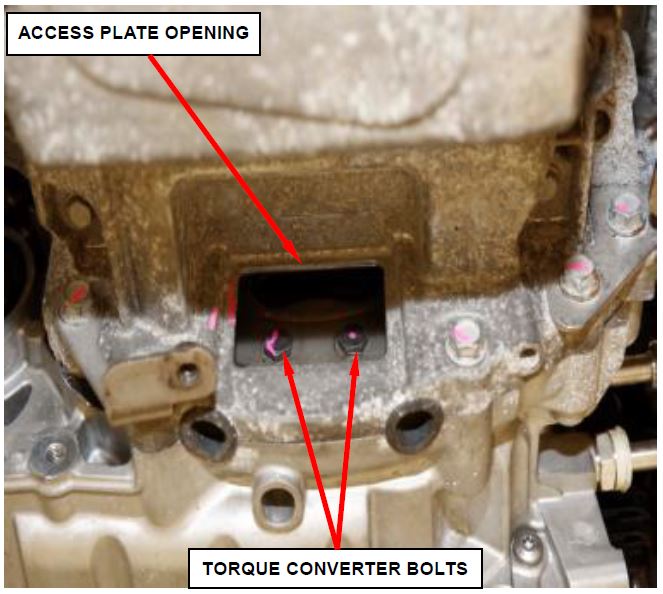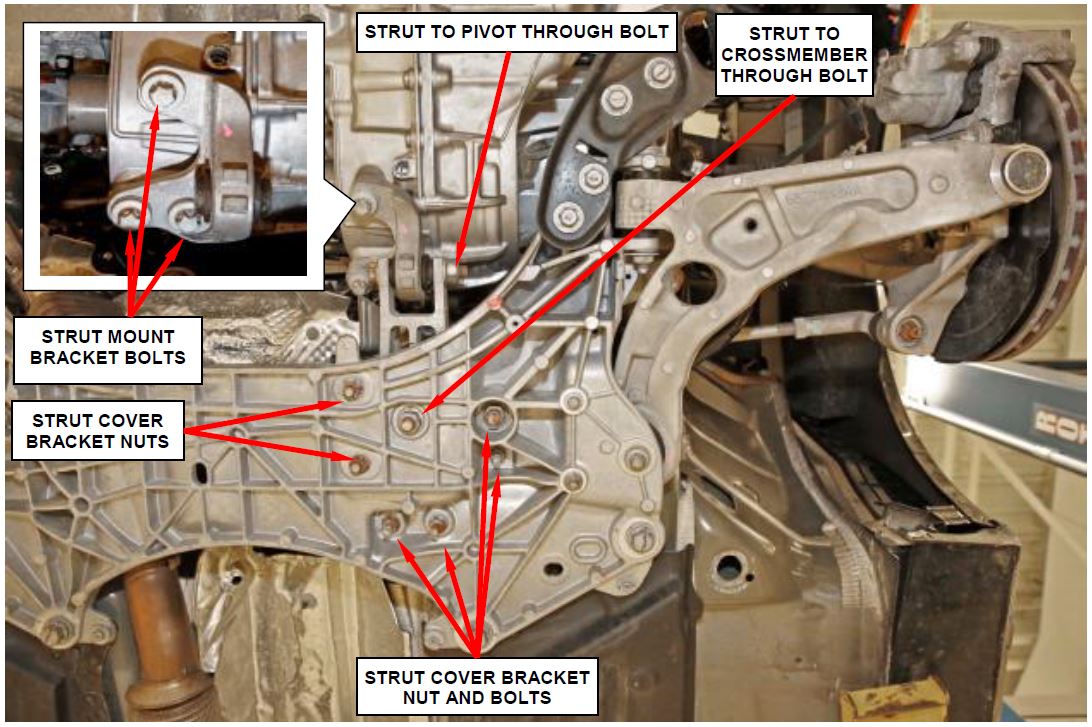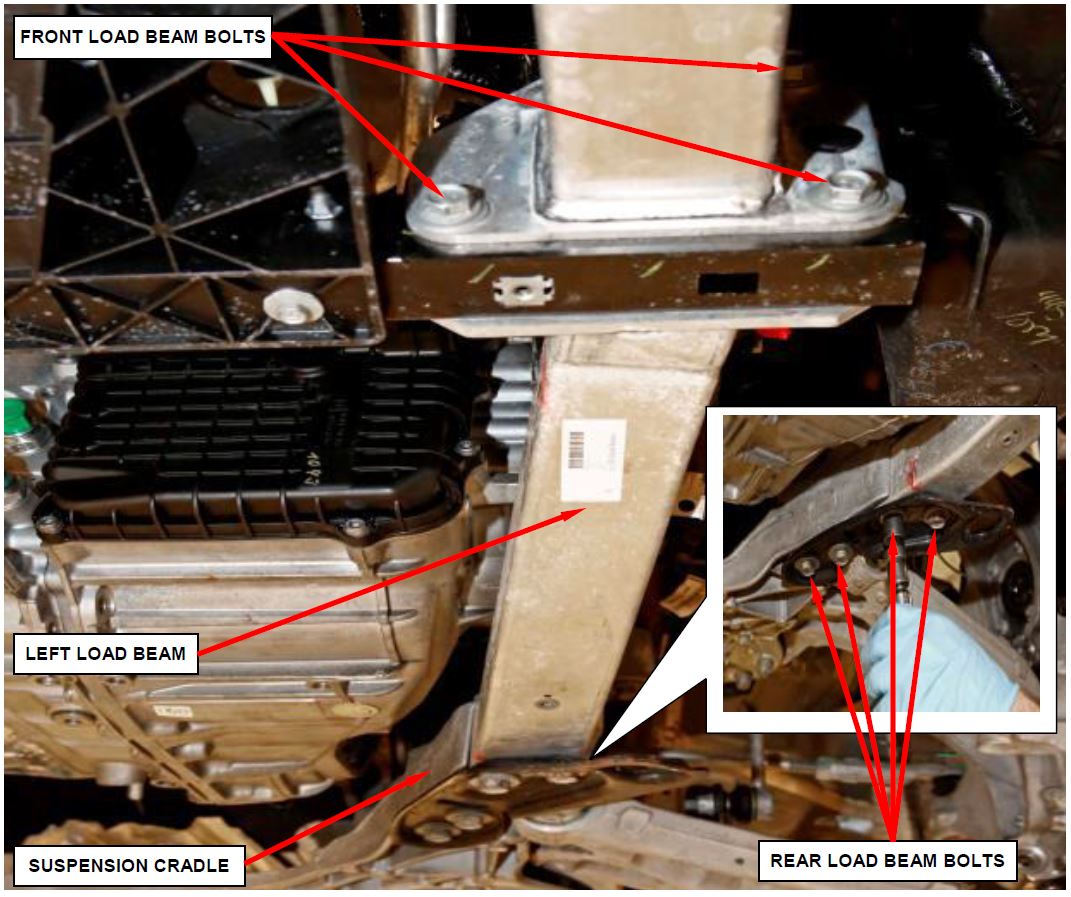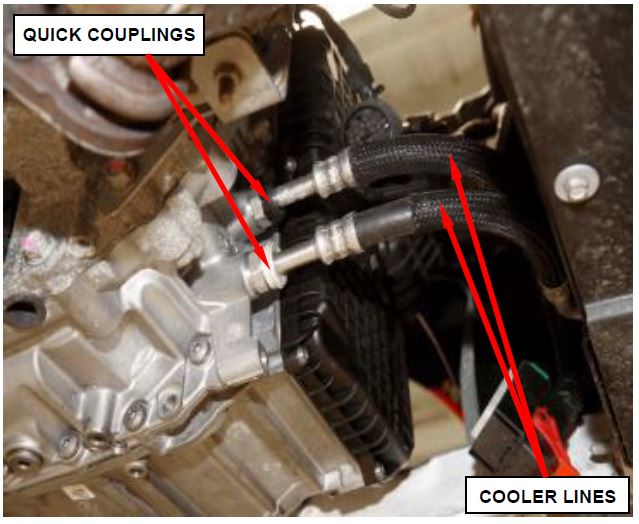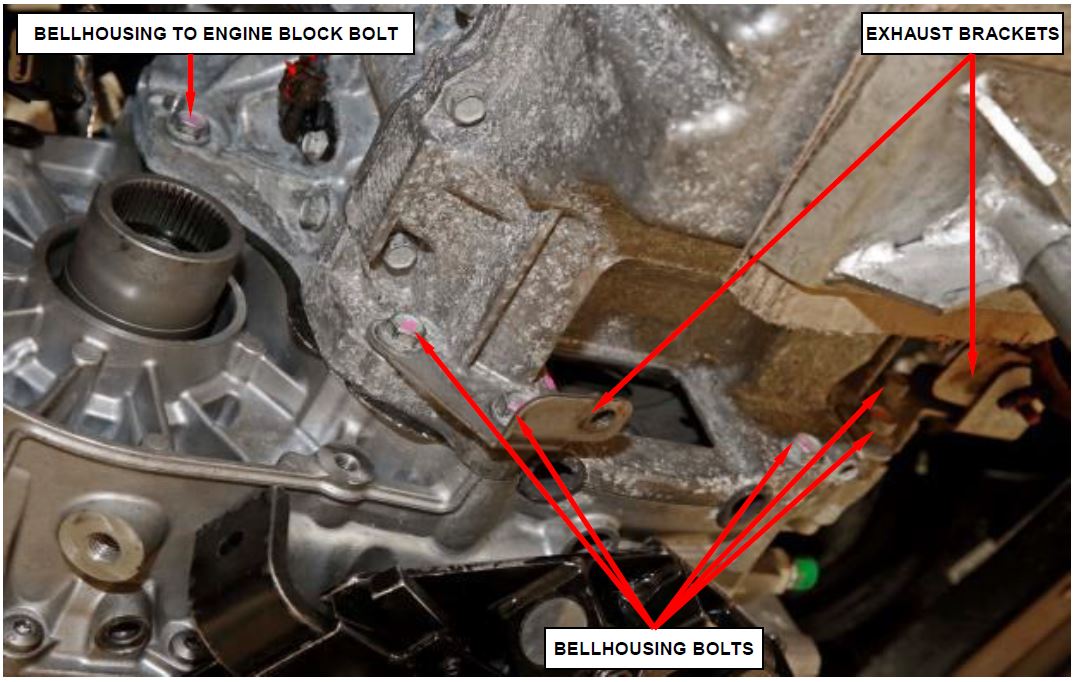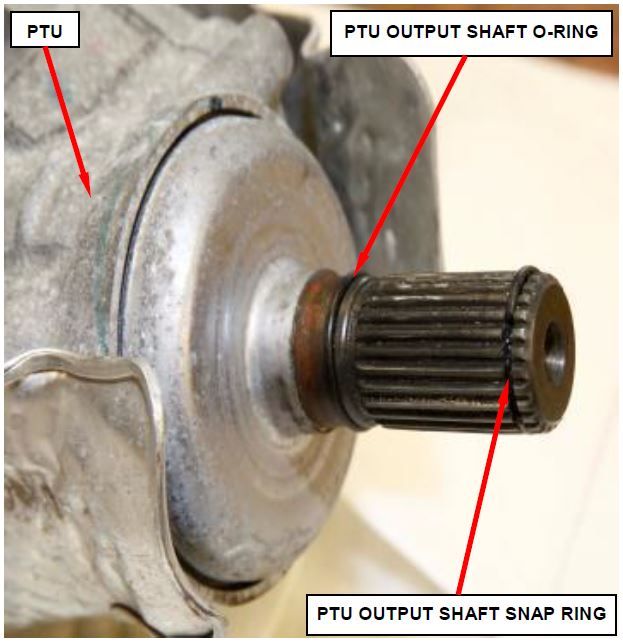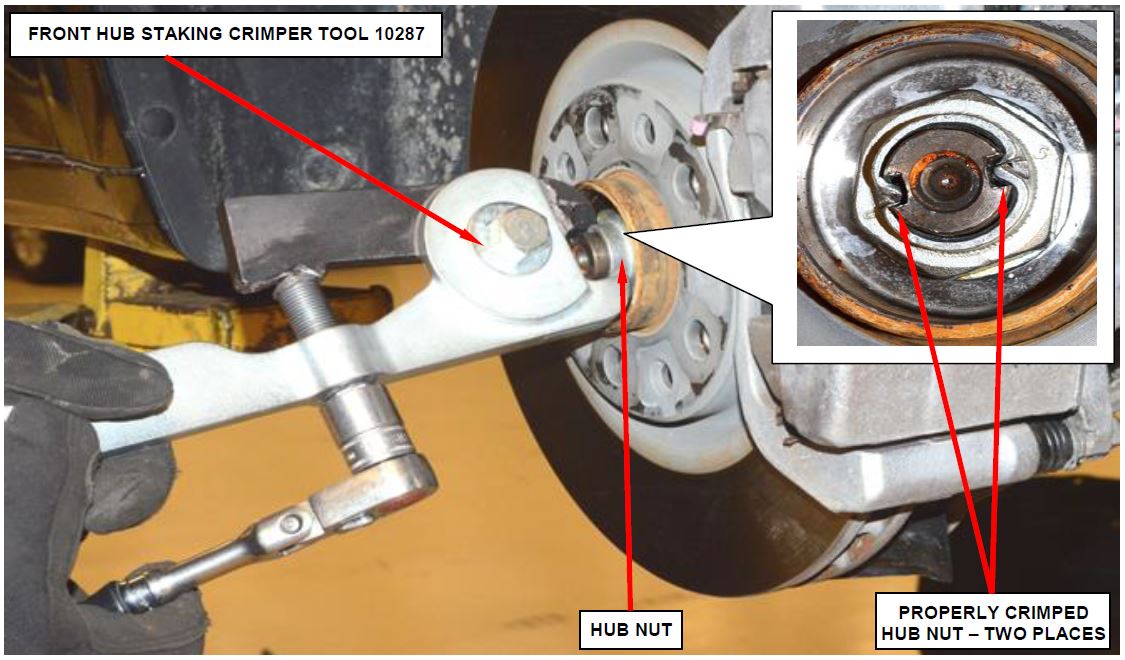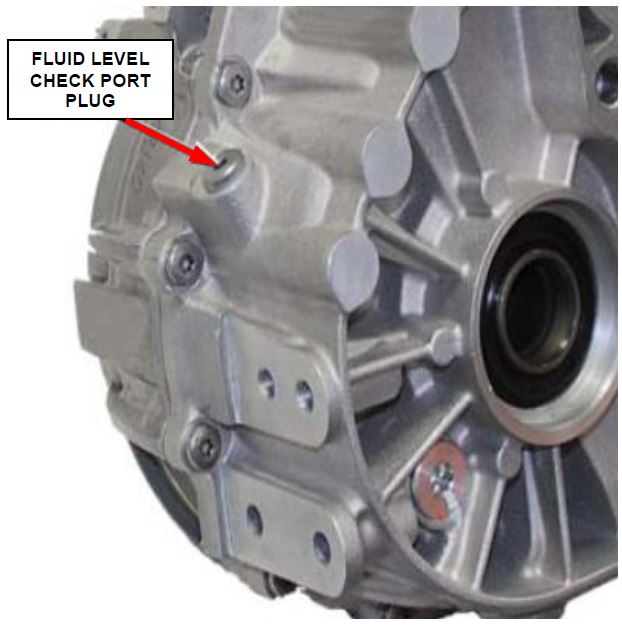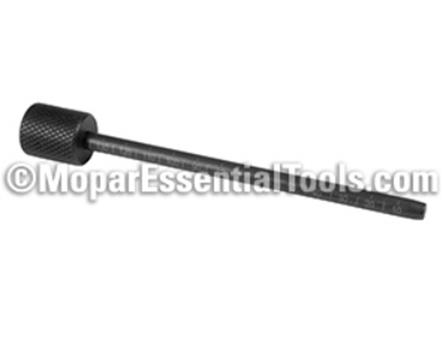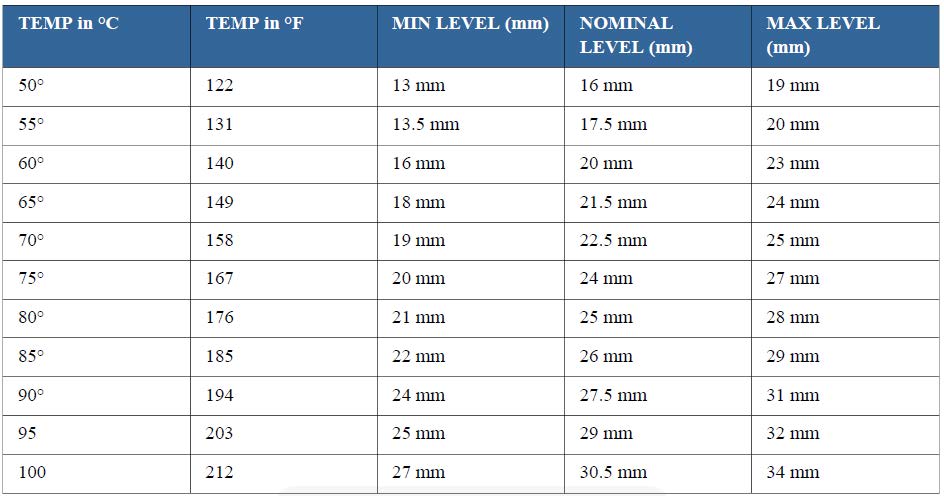| “This site contains affiliate links for which OEMDTC may be compensated” |
NHTSA Campaign Number: 15V090
Component(s): POWER TRAIN
Potential Number of Units Affected: 21,466
Manufacturer: Chrysler (FCA US LLC)
(FCA US LLC)
SUMMARY:
Chrysler (FCA US LLC) is recalling certain model year 2015 Chrysler
(FCA US LLC) is recalling certain model year 2015 Chrysler 200 vehicles manufactured March 9, 2014, to December 15, 2014, and equipped with a 9-speed automatic transmission.
200 vehicles manufactured March 9, 2014, to December 15, 2014, and equipped with a 9-speed automatic transmission.
The automatic transmission parking pawl may become contaminated or the park rod may become dislodged or broken.
This may prevent the transmission from shifting into the Park position.
CONSEQUENCE:
If the shift indicator displays “Park” but the park lock does not engage, the vehicle may roll away increasing the risk of a crash.
REMEDY:
Chrysler will notify owners, and dealers inspect the transmission.
will notify owners, and dealers inspect the transmission.
Any transmission found with contamination or a park rod will be replaced, free of charge.
The recall began April 9, 2015. Owners may contact Chrysler customer service at 1-800-853-1403.
customer service at 1-800-853-1403.
Chrysler ’s number for this recall is R08.
’s number for this recall is R08.
NOTES:
Owners may also contact the National Highway Traffic Safety Administration Vehicle Safety Hotline at 1-888-327-4236 (TTY 1-800-424-9153), or go to www.safercar.gov.
Check if your Vehicle has a Recall
Revised June 2015
Dealer Service Instructions for:
Safety Recall R08 / NHTSA 15V-090 Transaxle Park Rod
NOTE: Revised the inspection procedure on page 10.
Models
| 2015 | (UF) | Chrysler 200 200 |
NOTE: This notification applies only to the above vehicles equipped with a 3.6L engine (sales code ERB) and an automatic transaxle (sales code DF5) built from March 17, 2014 through September 20, 2014 (MDH 031715 through 092001).
| IMPORTANT: Some of the involved vehicles may be in dealer new vehicle inventory. Federal law requires you to complete this recall service on these vehicles before retail delivery. Dealers should also consider this requirement to apply to used vehicle inventory and should perform this recall on vehicles in for service. Involved vehicles can be determined by using the VIP inquiry process. |
Subject
The transaxle’s internal park rod on about 21,400 of the above vehicles may have been damaged during the manufacturing process. Also, debris may have been generated during the transaxle assembly process which could bind the park pawl.
A damaged park rod or a binding park pawl could result in the transaxle failing to engage the transaxle “PARK” feature when the transaxle shift selector is placed in the “PARK” position. Either of these conditions could allow unintended vehicle movement and cause a crash without warning.
Repair
The internal transaxle park rod will be inspected on all affected vehicles. The transaxle will also be tested for a properly operating park pawl. Transaxles found with a damaged park rod or binding park pawl will have the transaxle assembly replaced.
Alternate Transportation
Dealers should attempt to minimize customer inconvenience by placing the owner in a loaner vehicle if inspection determines that a transaxle assembly is required and the vehicle must be held overnight.
Parts Information
| Part Number | Description |
|---|---|
| RL254810AL | Kit, AWD Transaxle |
| RL248919AL | Kit, FWD Transaxle |
| Each transaxle kit contains the following components: | |
| Quantity | Description |
| 1 | Transaxle |
| 1 | Torque Converter |
| 6 | Bolt, Torque Converter to Flexplate |
| Part Number | Quantity | Description |
|---|---|---|
| 06509898AA | 2 | Nut, Hub |
| 68224126AA | 1 | Snap Ring, Propeller Shaft (AWD) |
| 68224037AA | 1 | O-Ring, Propeller Shaft (AWD) |
| 68242709AA | 6 | Bolts, Propeller Shaft (AWD) |
| 06510168AA | 2 | Bolt, Lower Ball Joint |
| 06502696 | 2 | Nut, Lower Ball Joint |
| 04880235AC | 1 | Gasket, Flange to Y-Pipe |
| 52022294AA | 1 | Gasket, Cross-Under Pipe |
| Part Number | Quantity | Description |
|---|---|---|
| 06104709AA | 4 | Nut, Cross Under Flanges |
| 68093232AA | 1 | Gasket, Catalytic Converter (AWD) |
| 68218925AA | Fluid, Transaxle (as required) | |
| 01949765 | 6 | Bolt, Torque Converter to Flexplate |
NOTE: The six Torque Converter to Flexplate Bolts, part number 01949765, are only required if the original transaxle is being reinstalled due to an inaccurate Park Rod Engagement Check tool.
Parts Return
Please make sure to retain this part until the recall claim is paid and the parts disposition has been determined. This recall part will be subject to parts return.
Special Tools
The following special tools are required to perform this repair:
| wiTECH VCI Pod Kit |
| Laptop Computer |
| Laptop Computer |
| Check Tool, Park Rod Engagement |
| Crimper, Front Hub Staking |
| Transmission Dipstick |
Service Procedure
A. Inspect Internal Transaxle Park Rod
- Position the vehicle over an appropriate hoist.
- Remove and save the engine appearance cover.
- Remove and save the battery.
- Disconnect the two Powertrain Control Module (PCM) electrical connectors from the PCM (Figure 1).
- Remove and save the three PCM bracket nuts, the PCM ground wire, and the PCM (Figure 1).
Figure 1 – Powertrain Control Module (PCM)
- Remove and save the wiring harness retainers from the battery tray (Figure 2).
- Remove and save the upper battery tray bolt (Figure 2).
Figure 2 – Wiring Harness Retainers
- Raise the vehicle to an appropriate height.
- Remove and save the left front tire and wheel assembly.
- Use the following steps to remove the left front wheelhouse splash shield.
a. Remove and save the push pin fasteners (Figure 3).
b. Remove and save the front wheelhouse splash shield bolts (Figure 3).
Figure 3 – Wheelhouse Splash Shield
c. Remove the left front wheelhouse splash shield from the vehicle.
- Use the following steps to remove the battery tray.
a. Remove and save the bolt that secures the washer solvent bottle to the battery tray (Figure 4).
b. Remove and save the bolt that secures the battery tray to the outer frame rail (Figure 4).
Figure 4 – Outer Battery Tray Bolts
c. Remove the wire harness from the lower edge of the battery tray.
d. Raise the vehicle to an appropriate height.
e. Remove the lower belly pan and the underbody shield.
f. Remove and save the two bolts that secure the battery tray to the inner frame rail (Figure 5).
Figure 5 – Inner Battery Tray Bolts
g. Lower the vehicle and remove the battery tray.
- Remove and save the nut holding the Manual Park Release (MPR) lever and position the lever and cable assembly to the side (Figure 6).
- Remove and save the transaxle fill hole plug (Figure 6).
Figure 6 – Manual Park Release Lever (MPR)
- Use the following steps to install the Park Rod Engagement Check Tool.
NOTE: Tool must be updated to part number 2023000211 before performing this procedure.
a. Insert the Park Rod Engagement Check Tool through the fill hole as shown (Figure 7).
b. Once fully inserted, position the Park Rod Engagement Check Tool check tab at 11o’clock and tighten the Park Rod Engagement Check Tool until flush to the transaxle case (Figure 7).
Figure 7 – Park Rod Engagement Check Tool
c. Rotate the Park Rod Engagement Check Tool check tab over the MPR lever shaft (Figure 8).
d. Screw the Park Rod Engagement Check Tool pin onto the MPR lever shaft (Figure 8).
NOTE: The inspection is not valid if the Park Rod Engagement Check Tool pin is not screwed on to the MPR shaft. A false failure could occur if the Park Rod Engagement Check Tool is not properly installed (Figure 8).
Figure 8 – Correctly Installed Park Rod Engagement Check Tool
e. Lift up on the bottom washer until the spring is fully compressed (Figure 9).
Figure 9 – Fully Compress Spring
NOTE: Once the spring is fully compressed, do not attempt to pull the washer up further. Applying excessive force may cause loss of tool calibration and/or tool breakage.
NOTE: Lift up on the bottom washer only. Do not hold the top bolt of the check tool down while lifting.
- If red or undercut is not visible continue with step 15.
- If red or undercut is visible the transaxle must be replaced. Continue to Section B. AWD/FWD Transaxle Removal.
- Remove the Park Rod Engagement Check Tool from the transaxle.
- Install the transaxle fill hole plug.
- Position the Manual Park Release (MPR) lever and cable assembly to the MPR shaft (Figure 6).
- Install the nut holding the MPR lever and securely tighten to 12 in. lbs. (16 Nm) (Figure 6).
- Remove the rubber spill guard by pulling up on the tab located in the rear right corner of the center console pass through.
- Remove the access cover using a flat bladed tool.
- Manually disengage/engage park lock by pulling upward on orange pull tab attached to the manual park lock lever and releasing back to home position (Figure 10). Repeat this procedure 10 times to ensure adequate rod movement.
Figure 10 – Manual Park Lock Lever
NOTE: The manual park lock lever must be in the normal operation position (down) to perform the following inspection (Figure 11).
Figure 11 – Manual Park Lock in Normal Position
- Raise the vehicle so that both front tires are just off of the floor then install the left front tire and wheel assembly and tighten the nuts to 103 ft. lbs. (140 N•m).
- Have an assistant hold the right front tire stationary, then rotate the left front tire:
- If the left front tire spins, while the right front tire is being held, the transaxle requires Install the center console pass through access cover and rubber spill guard then continue to Section B. AWD/FWD Transaxle Removal.
- If the left front tire does not spin, while the right front tire is being held, the transaxle does not require No repairs are needed. Continue with Step 24.
- Install the center console pass through access cover.
- Install the rubber spill guard, located in the rear right corner of the center console pass through.
- Use the following steps to install the battery tray.
a. Position the battery tray in the vehicle.
b. Loosely install the upper battery tray bolt (Figure 2).
c. Raise the vehicle to an appropriate height.
d. Install the two bolts that secure the battery tray to the inner frame rail and tighten to 106 in. lbs. (12 N•m) (Figure 5).
e. Install the lower belly pan and the underbody shield.
f. Tighten the bolt that secures the washer solvent bottle and the bolt that secures the battery tray to the outer frame rail to 106 in. lbs. (12 N•m) (Figure 4).
g. Lower the vehicle to an appropriate height.
h. Tighten the upper battery tray bolt 106 in. lbs. (12 N•m) (Figure 2).
i. Attach the wiring harness retainers to the battery tray (Figure 2).
j. Raise the vehicle to an appropriate height.
k. Install the left front wheel house splash shield.
- Lower the vehicle to an appropriate height.
- Position the Powertrain Control Module (PCM) and ground wire onto the mounting bracket.
- Install the three PCM bracket nuts and tighten to 44 in. lbs. (5 N•m) (Figure 1).
- Install the two PCM electrical connectors (Figure 1).
- Install the battery.
- Install the engine appearance cover.
- Lower the vehicle to the ground.
- Start the vehicle, with the wi-Tech connected, verify there are no fault codes present. Using the shift selector slowly shift through P-R-N-D-S to ensure smooth shifting and proper engagement. Perform a functionality test by driving vehicle, paying special attention to proper operation.
- Return the vehicle to the customer.
B. AWD/FWD Transaxle Removal
WARNING: Hoisting and jack lift points provided are for a complete vehicle. When the transaxle is removed, the center of gravity will shift toward the rear of the vehicle, possibly creating an unstable condition. Place safety stands under the rear frame rails behind the rear axle to stabilize the vehicle. Personal injury may result if safety stands are not used.
- Release the lock lever on the wire harness inline connector on the front of the battery tray and disconnect the wire harness inline connector from the main engine harness (Figure 12).
Figure 12 – Wire Harness Inline Connector
- Remove the Power Distribution Center (PDC) cover.
- Remove and save the nut from the Z-case fuse array (Figure 13).
- Unclip the two Z-case fuse array mounting clips and set aside (Figure 13).
- Remove the battery feed connector from the PDC (Figure 13).
- Loosen the three bolts that secure the PDC upper (Figure 13).
NOTE: These bolts are captured and cannot be removed.
Figure 13 – PDC Top and Z-Case Fuse Array
- The PDC upper will now lift upward. Carefully lift and disconnect the three bulkhead connectors from the PDC upper.
- Remove the three bolts securing the PDC tray and remove the PDC tray from the vehicle (Figure 14).
Figure 14 – PDC Tray
- Use the following steps to remove the vacuum pump:
a. Disconnect the vacuum pump electrical connector and remove the vacuum pump pigtail connector from the mounting bracket (Figure 15).
b. Release the locking tab and disconnect the quick connect vacuum hose from the vacuum pump (Figure 15).
c. Remove and save the two vacuum pump to bracket bolts, remove the vacuum pump from the vehicle (Figure 15).
Figure 15 – Vacuum Pump
- Release the lock on the Transaxle Control Module (TCM) wire harness connector and disconnect the TCM connector (Figure 16).
Figure 16 – Transaxle Control Module Connector
- Remove the wiring harness and the nut holding the ground cable from the top of the transaxle (Figure 17).
- Rotate the lock lever counterclockwise on the transaxle solenoid wire harness connector and disconnect the transaxle solenoid wire harness connector from the transaxle (Figure 17).
Figure 17 – Ground Cable
- Remove and save the nut holding the Manual Park Release (MPR) lever and position the lever and cable assembly to the side (Figure 18).
- Release the locks holding the MPR cable to the MPR cable bracket on the transaxle and separate the MPR cable from the MPR bracket (Figure 18).
Figure 18 – Manual Park Release Cable (MPR)
- Disconnect the Power Transfer Unit (PTU) electrical connector located on the top of the PTU.
- Remove the PTU vent hose from the top of the PTU and unclip it from the coolant line.
- Position a floor jack under the transaxle and raise the jack enough to relieve tension on the upper transaxle mount.
- Remove and save the three upper transaxle mounting bolts holding the upper transaxle mount to the adaptor block (Figure 19).
- Remove and save the four upper transaxle mounting bolts (Figure 19).
Figure 19 – Transaxle Mounting Bolt Locations
- Remove and save the four adaptor block bolts and remove the adaptor block from the transaxle (Figure 20).
Figure 20 – Adaptor Block Bolts
- Remove the left front tire and wheel assembly and place a wooden block between the transaxle side cover and the frame rail load beam (Figure 21).
- Lower the floor jack until the wood block supports the transaxle. Remove the floor jack.
- Remove and save the ground cable bolt holding the ground cable to the transaxle and separate the ground cable from the transaxle (Figure 21).
Figure 21 – Ground Cable Bolt
- Remove and save the upper bolt holding the wire harness bracket and transaxle bellhousing to the engine block (Figure 22).
Figure 22 – Wire Harness Bracket
- Remove and save the two upper bolts holding the transaxle bellhousing to the engine block located behind the main engine wire harness and remove the vacuum pump bracket (Figure 23).
Figure 23 – Upper Transaxle Bellhousing Bolts
- Remove and save the two upper bolts holding the bellhousing to the engine block located in the rear (Figure 24).
Figure 24 – Top Rear Bellhousing Bolts
- Remove and save the two starter motor bolts (Figure 25).
Figure 25 – Starter Motor Bolts
NOTE: After the bolts holding the starter motor to the bellhousing are removed the starter motor will remain in place.
- Raise and support the vehicle.
- Place safety stands under the rear frame rails behind the rear axle to stabilize the vehicle’s center of gravity.
- Use the following steps to remove the cross-under pipe:
NOTE: Use care when handling the downpipe to avoid bending or damaging the flex element in the downpipe.
a. Remove and discard the two rear cross-under pipe flange nuts and flange gasket (Figure 26).
Figure 26 – Rear Cross-Under Pipe Flange
b. Remove and save the cross- under pipe support bolt (Figure 27).
c. Remove and discard the two front cross-under pipe flange nuts and flange gasket (Figure 27).
Figure 27 – Front Cross-Under Pipe Flange
- Lower the vehicle to an appropriate height.
- Place a suitable drain pan under the transaxle to collect fluid that may leak from the differential seals.
- Remove the right front tire and wheel assembly.
- Use the following steps to remove the right hand half shaft.
NOTE: Never handle the half shaft assembly by the inner or outer boots (2). This can cause damage to the boot, which will allow contaminants to enter the Constant Velocity (CV) joint.
NOTE: The inner tripod joint is designed with a retention feature that prevents the tripod rollers from coming out of the inner joint housing up to a specific load. If this feature is overcome and the rollers are pulled past the retention feature the joint will lock up and no longer function properly. The entire half shaft assembly must be replaced if this occurs
a. Using a suitable punch, lift the two staked areas in the hub nut to avoid damaging the half shaft (Figure 28).
Figure 28 – Hub Nut
b. While a helper applies the brakes to keep the hub from rotating, remove and discard the hub nut from the half shaft and discard. The used hub nut is not reusable.
c. If equipped, remove and save the three bolts holding the intermediate support bearing to the engine bracket (FWD, right side only).
d. Remove and discard the lower ball joint pinch bolt and nut from the steering knuckle (Figure 29).
Figure 29 – Lower Ball Joint Pinch Bolt and Nut (Left Side Shown)
NOTE: Use care when separating the ball joint stud from the knuckle so the ball joint boot does not get damaged.
e. Separate the lower control arm from the steering knuckle by prying down with a pry bar (Figure 30).
f. Pry down on the lower control arm until the ball joint stud is clear of the steering knuckle. Position the steering knuckle assembly to the side. Slowly release the control arm (Figure 30).
Figure 30 – Lower Control Arm to Knuckle
NOTE: The half shaft may stick in the hub bearing during removal. A dead-blow or plastic hammer can be used to tap the half shaft inward and out of the hub bearing.
j. Swing the steering knuckle outward and off the half shaft end (Figure 31).
Figure 31 – Half Shaft Removal (Left Side Shown)
h. Place a drain pan under the transaxle to catch fluid that may spill from the transaxle when the half shaft is removed.
i. Remove the half shaft from the vehicle.
- Use the procedure in step 35 to remove the left hand half shaft then continue with step 37.
- For All Wheel Drive (AWD) vehicles, use the following steps to remove the Power Transfer Unit (PTU). For FWD vehicles continue with step 38.
CAUTION: Propeller shaft removal is a two-person operation. Never allow propeller shaft to hang from the center bearing, or while only connected to Power Transfer Unit (PTU) or rear driveline module flanges. A helper is required. If a propeller shaft section is hung unsupported, damage may occur to the joint, boot, and/or center bearing from over-angulation. This may result in driveline vibrations.
a. Apply index marks on the rear pinion flange and the rear propeller shaft flange (Figure 32).
b. Remove and discard the six propeller shaft bolts at the rear pinion flange (Figure 32).
Figure 32 – Propeller Shaft Bolts
c. Remove and save the two front center bearing bolts (Figure 33).
d. Remove and save the two rear center bearing bolts (Figure 33).
Figure 33 – Center Bearing Bolts
e. Slide the propeller shaft off the Power Transfer Unit (PTU) and remove the propeller shaft from the vehicle.
f. Remove and save the two steady rest bolts from the PTU mounting bracket and remove the steady rest bracket (Figure 34).
Figure 34 – Steady Rest Bolts
g. Remove and save the two upper PTU mounting bracket-to-PTU bolts (Figure 35).
h. Remove and save the lower PTU mounting bracket-to-PTU bolt (Figure 35).
i. Remove and save the additional four PTU mounting bracket-to-PTU bolts (Figure 35).
Figure 35 – PTU Mounting Bracket
j. Remove the air cleaner resonator (Figure 36).
Figure 36 – Air Cleaner Resonator
NOTE: The upper catalytic converter support bracket bolt and the two catalytic converter-to-cylinder head bolts can be accessed from the top side between the engine and dash panel.
k. Remove and save the upper catalytic converter support bracket bolt (Figure 37).
l. Remove and save the two bolts holding the rear catalytic converter to the cylinder head (Figure 37).
Figure 37 – Catalytic Converter Mounting (Viewed from Under the Vehicle)
m. Separate the rear catalytic converter from the cylinder head quick flange and wire it up and out of the way.
n. Remove and save the two quick flange bolts and remove and discard the catalytic converter gasket and save the quick flange (Figure 37).
o. Remove and save the four heat shield bolts holding the heat shield to the PTU and remove the heat shield (Figure 38).
p. Remove and save the four bolts holding the PTU to the transaxle (Figure 38).
q. Move the PTU away from the transaxle and separate the spline shaft from the transaxle output shaft.
r. Push the PTU to the right side of the vehicle and tip the left side downward and out of the vehicle.
Figure 38 – PTU Heat Shield
(PTU Out of Vehicle for Photographic Purposes)
- Drain the transaxle fluid.
- Remove the torque converter bolt access plate (Figure 39).
Figure 39 – Torque Converter Bolt Access Plate
NOTE: The crankshaft can be rotated using a wrench to turn the balancer pulley end bolt.
- Through the access plate opening, remove and discard the six flex plate to torque converter bolts. Rotate the crankshaft to bring each set of bolts into view through the access door (Figure 40).
Figure 40 – Torque Converter Bolt Access
- Using a wooden block to protect the engine oil pan, position a high lift screw jack under the engine oil pan to support the engine.
- Position a suitable transaxle jack under the transaxle in a stable position and secure the transaxle to the lift plate of the transaxle jack.
- Lift the transaxle jack and high stand until the wooden block can be removed from between the transaxle side cover and the frame rail load beam.
- Use the following steps to remove the transaxle strut mount bracket.
a. Remove and save the front transaxle strut to pivot through bolt (Figure 41).
b. Remove and save the transaxle strut to crossmember through bolt (Figure 41).
c. Remove and save the two strut cover bracket nuts (Figure 41).
d. Remove and save the four strut cover bracket nuts and bolts (Figure 41).
e. Remove the strut cover and strut from the vehicle.
f. Remove the three transaxle strut mount bracket bolts from the transaxle and remove the transaxle strut mount bracket (Figure 41).
Figure 41 – Transaxle Strut Mount
- Remove and save the four bolts holding the rear end of the left load beam to the suspension cradle (Figure 42).
- Remove and save the three bolts holding the front of the left load beam to the radiator support panel (Figure 42).
Figure 42 – Left Load Beam
- Separate the left load beam from the vehicle.
- Disengage the quick couplings and remove the cooler lines from the transaxle. If accessible, install suitable cap-plugs in the male and female ends of the cooler lines to prevent leakage (Figure 43).
Figure 43 – Cooler Lines
- Remove and save the bolt holding the transaxle bellhousing to the engine block from above the differential housing (Figure 44).
- Remove and save the five bolts holding the exhaust brackets, engine block and oil pan to the bellhousing (Figure 44).
Figure 44 – Lower Bellhousing Bolts
- Using a suitable prying tool, pry the bellhousing away from the engine block.
- While guiding the transaxle past obstacles, lower the transaxle downward and out of the vehicle.
- Remove the transaxle from the transaxle jack.
- Continue with Section C. AWD/FWD Transaxle Installation.
C. AWD/FWD Transaxle Installation
NOTE: When installing a new transaxle, remove the shipping cap from the vent.
- Using a safety chain secure the NEW transaxle to the lift plate of the transaxle jack.
- While guiding the transaxle past obstacles, jack the transaxle upward until the engine and the transaxle are in
NOTE: Make sure the separator plate is properly installed on the guide pins.
- Push the transaxle against the engine block until the guide pins engage.
- Install the transaxle bellhousing bolt next to the differential housing and tighten to 37 ft. lbs. (50 N•m) (Figure 44).
- Install the five bellhousing bolts and two exhaust brackets to engine block and oil pan and tighten to 37 ft. lbs. (50 N•m) (Figure 44).
- Using a wooden block to protect the engine oil pan, position a high lift screw jack under the engine oil pan to support the engine.
- Lift the transaxle jack and high stand until there is enough clearance to install the load beam.
- Install the load beam and the three load beam bolts that hold the load beam to the radiator support panel and the four bolts that hold the load beam to the suspension cradle and securely tighten (Figure 42).
- Use the following steps to install the transaxle strut mount.
a. Position the transaxle strut mount to the transaxle.
b. Install the three transaxle strut mount bolts and tighten to 77 ft. lbs. (105 N•m) (Figure 41).
c. Position the transaxle strut and bracket to the crossmember.
d. Loosely install the three strut bracket nuts and bolts.
e. Hand-start the two strut bracket nuts (Figure 41).
f. Install the transaxle strut to crossmember through bolt and tighten to 118 ft. lbs. (160 N•m) (Figure 41).
g. Install the front transaxle strut to pivot through bolt and tighten the nut to 118 ft. lbs. (160 N•m) (Figure 41).
h. Tighten the two strut cover bracket nuts to 37 ft. lbs. (50 N•m) (Figure 41).
i. Tighten the three strut cover bracket nuts to 37 ft. lbs. (50 N•m) (Figure 41).
- Place a wooden block between the load beam and the transaxle.
- Remove the safety chain holding the transaxle to the transaxle jack lift plate.
- Lower the high lift screw jack and the transaxle jack until the transaxle rests on the wooden block.
- Remove the high lift screw jack and transaxle jack from under the vehicle.
- Through the access plate opening, install the six NEW bolts to hold the flex plate to the torque converter and tighten to 30 ft. lbs. (40 N•m). Rotate the crankshaft to bring each set of bolts into view through the access plate opening (Figure 40).
- Install the access plate in the opening (Figure 39).
- Engage the quick couplings to hold the cooler lines to the transaxle (Figure 43).
- Position the starter in place, install the two starter bolts and tighten to 40 ft. lbs. (54 N•m) (Figure 25).
- For All Wheel Drive (AWD) vehicles install the Power Transfer Unit (PTU). For Front Wheel Drive (FWD) vehicles continue to step 19.
a. Position the quick flange bracket and the NEW catalytic converter gasket to the engine (Figure 37).
b. Loosely attach the two bolts to the quick flange bracket.
c.Tighten the right quick flange bracket bolt to 17 ft. lbs. (23 N•m).
d. Replace the Power Transfer Unit (PTU) output shaft snap ring and O-ring before the PTU is reinstalled (Figure 45).
Figure 45 – PTU Snap Ring and O-Ring
e. Tip the right side upward and into the gap over the suspension cradle and align the Power Transfer Unit (PTU) with the transaxle output shaft.
f. Shift the PTU to the left onto transaxle and engage the spline shaft into the transaxle output shaft adapter.
g. Install the four bolts holding the PTU to the transaxle and tighten to 35 ft. lbs. (48 N•m) (Figure 38).
h. Position the heat shield and install the four heat shield bolts that hold the heat shield to the and tighten to 10 ft. lbs. (14 N•m) (Figure 38).
i. Position the rear catalytic converter to the quick flange bracket and install the two upper bolts (Figure 37).
j. Tighten the left the rear catalytic converter bolt to 17 ft. lbs. (23 N•m) .
k. Tighten the right the rear catalytic converter bolt to 17 ft. lbs. (23 N•m).
l. Tighten the left quick flange bracket bolt to 17 ft. lbs. (23 N•m).
m. Install the upper catalytic converter support bracket bolt and tighten to 21 ft. lbs. (28 N•m) (Figure 37).
n. Install the two upper PTU mounting bracket-to-PTU bolts and tighten to 32 ft. lbs. (44 N•m) (Figure 35).
o. Install the lower mounting bracket-to-PTU bolt and tighten to 32 ft. lbs. (44 N•m) (Figure 35).
p. Install the additional four PTU mounting bracket-to-PTU bolts and tighten to 16 ft. lbs. (22 N•m) (Figure 35).
q. Install the steady rest bracket and the two mounting bolts and tighten to 16 ft. lbs. (22 N•m) (Figure 34).
r. Use steps m through q to install the rear propeller shaft.
NOTE: Lightly apply grease to the splines prior to installation.
NOTE: If the snap ring is fully engaged, the propeller shaft will not be removable from the PTU by hand.
s. With the aid of a helper, install the propeller shaft into the PTU by wiggling the plug-on joint back and forth while pushing forward until splines engage and propeller shaft is fully seated.
t. Perform the push/pull test to verify joint is fully seated over snap ring.
u. Position the rear center bearing in place, install the two rear center bearing bolts and tighten to 17 ft. lbs. (23 N•m) (Figure 33).
v. Position the front center bearing in place, install the two front center bearing bolts and tighten to 17 ft. lbs. (23 N•m) (Figure 33).
w. Align the index marks on the rear propeller shaft flange and the rear pinion flange, start and tighten the six NEW propeller shaft bolts to 15 ft. lbs. (21 N•m) (Figure 32).
NOTE: The six bolts that are used to secure the propeller shaft to the RDU input flange MUST be replaced. Do not reuse the bolts/washers.
NOTE: Use of Anti-seized compound is prohibited.
NOTE: Make sure the double washer is flat/flush to the joint housing prior to tightening the bolt to avoid damage to the washer, if damaged replace bolt washer assembly.
NOTE: No torque verification is allowed after 10 minutes of the bolts being tightened to specifications. ANY MANIPULATION of the bolts after 10 minutes of being tightened will require the bolt(s) to be replaced.
- Use the following steps to install the cross-under pipe.
a. Loosely install the two NEW front cross-under pipe flange nuts and the NEW flange gasket to the front catalytic converter flange (Figure 27).
b. Connect the Y-pipe to cross-under pipe and NEW flange gasket then tighten the two NEW rear cross-under pipe flange nuts to 18 ft. lbs. (25 N•m) (Figure 26).
c. Install the cross-under pipe support bolt and tighten to 17 ft. lbs. (23 N•m) (Figure 27).
d. Tighten the two front cross-under pipe to catalytic front catalytic converter flange nuts to 18 ft. lbs. (25 N•m) (Figure 27).
- Install the Right and Left Hand front half shafts.
NOTE: Never handle the half shaft assembly by the inner or outer boots (2). This can cause damage to the boot, which will allow contaminants to enter the Constant Velocity (CV) joint.
NOTE: The inner tripod joint is designed with a retention feature that prevents the tripod rollers from coming out of the inner joint housing up to a specific load. If this feature is overcome and the rollers are pulled past the retention feature the joint will lock up and no longer function properly. The entire half shaft assembly must be replaced if this occurs
a. Raise and support the vehicle to an appropriate height.
NOTE: Lightly apply grease to the splines prior to installation.
b. Position the right hand half shaft under the vehicle and over the lower control arm.
c. Install the half shaft into the transaxle and lightly twist until half shaft slides all the way into the transaxle.
NOTE: If snap ring is fully engaged, tripod joint will not be removable from transaxle by hand.
d. Swing the steering knuckle outward and position the half shaft end through the hub bearing (Figure 31).
e. Install the lower ball joint into the knuckle (Figure 30).
f. Install a NEW lower ball joint pinch bolt and nut and tighten to 18 ft. lbs. plus 115° (25 N•m plus 115°) (Figure 29).
g. If equipped, position the intermediate support bearing bracket onto the engine bracket and align the bolt holes (FWD only).
h. If equipped, install two bolts to hold intermediate support bearing to the engine bracket and tighten to 17 ft. lbs. (24 N•m).
i. Install a NEW hub nut and while a helper applies the brakes, tighten the nut to 148 ft. lbs. (200 N•m) (Figure 46).
Figure 46 – Crimp Halfshaft Hub Nut with Special Tool 10287
j. Using Special Tool 10287, front hub staking crimper tool, align the leading cutting edge of the front Hub Staking tool with the top left side channel on axle as shown (Figure 46). Tighten the fastener on the front hub staking tool with hand tools until the threads bottom out completely.
NOTE: The hub nut must be staked so that it looks similar to Figure 46. Both edges must be split and bent into the shape shown. The staking must be in the opposite direction from the forward rotation of the wheel.
k. Repeat steps a through j to install the left hand half shaft.
- Lower the vehicle.
- Connect the PTU electrical connector located on the top of the PTU.
- Install the PTU vent hose to the top of the PTU and clip it to the coolant line.
- Install the air cleaner resonator.
- Position the vacuum pump bracket to the bellhousing and install the two upper bellhousing bolts located behind the main engine wire harness and tighten to 37 ft. lbs. (50 N•m) (Figure 23).
- Install the upper bolt holding the wire harness bracket and transaxle bellhousing to the engine block and tighten to 37 ft. lbs. (50 N•m) (Figure 22).
- Install the two upper bellhousing bolts located at the rear of the engine compartment and tighten to 37 ft. lbs. (50 N•m) (Figure 24).
- Engage the Transaxle Control Module (TCM) solenoid wire harness connector into the TCM (Figure 17).
- Close the lock on the TCM wire harness connector.
- Attach the engine harness clips to the bellhousing.
- Place the transaxle mount adaptor block in position on the transaxle.
- Install the four bolts that hold the transaxle mount adaptor block to the transaxle and tighten to 77 ft. lbs. (105 N•m) (Figure 20).
- Install the four upper transaxle mount bolts and tighten to 77 ft. lbs. (105 N•m) (Figure 19).
- Install the three upper transaxle mount bolts holding the upper transaxle mount to the adaptor block and tighten to 118 ft. lbs. (160 N•m) (Figure 19).
- Place the ground cable in position on the transaxle, install the ground cable bolt and tighten to 16 ft. lbs. (22 N•m) (Figure 21).
- Position a floor jack under the transaxle.
- Raise the transaxle and remove the wooden block from between the transaxle and the load beam.
- Lower and remove the floor jack.
- Engage the transaxle solenoid wire harness connector into transaxle connector (Figure 17).
- Rotate the lock lever clockwise on the transaxle solenoid wire harness connector to lock the connector.
- Place the Manual Park Release (MPR) cable housing in position on the mount bracket (Figure 18).
- Press the MPR cable housing into the mount bracket on the transaxle (Figure 18).
- Install MPR lever and the nut holding the MPR lever and securely tighten to 12 in. lbs. (16 N•m) (Figure 18).
- Place the ground cable and the wiring harness bracket in position on the transaxle (Figure 21).
- Install the ground cable nut and the wiring harness to the top of the transaxle and tighten to 16 ft. lbs. (22 N•m) (Figure 17).
- Position the vacuum pump onto the electric vacuum pump bracket. Install and tighten the two vacuum pump to bracket bolts to 71 in. lbs. (8 N•m) (Figure 15).
- Attach the harness connector to the bracket and connect the electrical connector to the electric vacuum pump (Figure 15).
- Connect the quick-connect vacuum hose to the electric vacuum pump and seat the locking tab (Figure 15).
- Using the three bolts, install the Power Distribution Center (PDC) tray in the vehicle and tighten to 10 ft. lbs. (14 N•m) (Figure 14).
- Connect the three bulkhead connectors to the PDC (Figure 14).
- Engage the plastic clips that secure the PDC upper to the PDC tray (Figure 13).
- Tighten the three bolts that secure the PDC upper in place (Figure 13).
- Connect the battery feed connector to the PDC (Figure 13).
- Install the Z-case fuse array onto the PDC and clip the Z-case fuse array mounting clips (Figure 13).
- Install the Z-case fuse array nut and securely tighten (Figure 13).
- Install the PDC cover.
- Use the following steps to install the battery tray.
a. Position the battery tray in the
b. Loosely install the upper battery tray bolt (Figure 2).
c. Raise the vehicle to an appropriate vehicle.
d. Install the two bolts that secure the battery tray to the inner frame rail and tighten to 106 in. lbs. (12 N•m) (Figure 5).
e. Install the lower belly pan and the underbody shield.
f. Tighten the bolt that secures the washer solvent bottle and the bolt that secures the battery tray to the outer frame rail to 106 in. lbs. (12N•m) (Figure 4).
g. Lower the vehicle to an appropriate height.
h. Tighten the upper battery tray bolt 106 in. lbs. (12 N•m) (Figure 2).
i. Attach the wiring harness retainers to the battery tray and connect the wire harness inline connector (Figure 12) (Figure 2).
j. Raise the vehicle to an appropriate height.
k. Install the left front wheel house splash shield (Figure 3).
- Lower the vehicle to an appropriate height.
- Position the Powertrain Control Module (PCM) and ground wire onto the mounting bracket.
- Install the three PCM bracket nuts and tighten to 44 in. lbs. (5 N•m) (Figure 1).
- Install the two PCM electrical connectors (Figure 1).
- Install the battery.
NOTE: If the original transmission is being reinstalled due to an inaccurate Park Rod Engagement Check Tool, a TCM flash is not required. Continue with step 94.
- Use the following steps to flash the new TCM with the latest available software.
- Install a battery charger
 and verify that the charging rate provides 13.0 to 13.5 volts. Do not allow the charger to time out during the flash process. Set the battery charger timer (if so equipped) to continuous charge.
and verify that the charging rate provides 13.0 to 13.5 volts. Do not allow the charger to time out during the flash process. Set the battery charger timer (if so equipped) to continuous charge.
NOTE: wiTECH must be used to perform this recall. This procedure must be performed with software release level 15.02 or higher. If the reprogramming flash for the Transmission or Powertrain Control Modules is aborted or interrupted, repeat the procedure.
NOTE: Use an accurate stand-alone voltmeter. The battery charger volt meter may not be sufficiently accurate. Voltages outside of the specified range will cause an unsuccessful flash. If voltage reading is too high, apply an electrical load to the vehicle by activating the park or headlamps and/or HVAC blower motor to lower the voltage.
- Verify that the wiTECH micro POD is still connected to the vehicle data link connector.
- Place the ignition in the “RUN” position.
- Open the wiTECH Diagnostic application.
- Starting at the “Select Tool” screen, highlight the row/tool for the wiPOD device you are using. Then select “Next” at bottom right side of the screen.
- Enter your “User id” and “Password”, then select “Finish” at the bottom of the screen.
- From the “Vehicle View” screen, click on the “TCM” icon.
- From the “TCM View” screen, compare the “Current ECU Flash Number” with the “New Part Number” listed on the “sort table”. If the “Current ECU Flash Number” is the same as the “New Part Number” continue to Step 76. If the part numbers are not the same, continue to Step 72.
- With the cursor over the desired flash file, click the green arrow button on the right side of the screen to start the process.
- From the “ECU Flash” screen follow the wiTECH screen instructions to complete the reprogramming.
- Once the flash is complete click the “OK” button on the “ECU Flash” screen.
- From the “TCM View” screen, compare the “Current ECU Flash Number” with the “New Part Number” listed on the “sort table”. If the “Current ECU Flash Number” is the same as the “New Part Number” the flash is complete. If the part numbers are not the same, repeat Steps 70 through 74. If the part numbers match, continue with Step 76.
- Select “ Functions” tab.
- Highlight “TCM VIN Verification” and click on the green arrow to start the process.
- Follow screen prompts to complete VIN verification process.
- Page back to “Vehicle View” screen.
- Select “Vehicle Preparations” tab.
- Highlight “Proxi Configuration Alignment” and click on the green arrow to start the process.
- Follow screen prompts to complete proxi configuration alignment process.
- Turn the ignition to the “OFF” position.
- Unplug the wiTECH micro POD from the vehicle, close the doors and wait two minutes.
- Connect the wiTECH micro POD to the vehicle.
- Turn the ignition to the “RUN” position.
- Start a wiTECH session.
- Select the “Vehicle Preparations” tab.
- Highlight “Proxi Configuration Alignment” and click on the green arrow to start the process.
- Follow the screen prompts to verify the proxi configuration alignment:
- If the TCM module is not aligned, repeat Steps 76 through Step 89.
- If the TCM module is aligned, continue with Step 91.
- Cycle the ignition to the “OFF” position and wait one minute.
- Place ignition in the “RUN” position.
- Clear all Diagnostic Trouble Codes (DTC’s).
- Use the following steps to verify that the transaxle is filled to the specified fluid level.
NOTE: The new transmissions are pre-filled to account for the needs of the transmission and the cooler line volume.
NOTE: Special Tool Dipstick 10323A and scan tool are required to accurately measure the fluid level in the automatic transmission.
NOTE: Checking the fluid level in the automatic transmission is to measure the distance from the upper lip of the fluid level check port, located on top of the transmission housing above the differential, down to the surface of the fluid. Tool 10323A fluid level indicator is marked in 5 mm increments. The engine must be running at idle with the transmission in park and the vehicle in a level position.
a. With the wiTECH scan tool, view Data Display and read the transmission Fluid Temperature.
b. Start the engine and allow it to run at idle with the transmission in Park.
c. Verify that the fluid temperature is above 50 °C.
d. Remove the plug from the fluid level check port (Figure 47).
Figure 47 – Fluid Level Check Port
e. Insert Special Tool Transmission Dipstick 10323A (Figure 48) into the fluid level check port and allow the handle of the 10323A – Transmission Dipstick to rest on the flat surface of the transmission housing around the check port.
Figure 48 – 10323A Transmission Dipstick
f. Remove the 10323A – Transmission Dipstick from the check port, keeping the handle above the tip so the level reading remains accurate.
g. Note the increment on the shaft of the 10323A – Transmission Dipstick where the fluid left a witness mark.
h. Based on the temperature of the fluid and the measurement on the tool, refer to the table to determine the proper level (Figure 49).
i. Turn the engine “OFF”.
j. Install the plug into the fluid level check port and tighten to 17 ft. lbs. (23 N•m).
Figure 49 – Fluid Level Table
- Install the engine appearance cover.
- Install the right and left front tire and wheel assemblies and tighten the nuts to 103 ft. lbs. (140 N•m).
NOTE: If the original transmission is being reinstalled due to an inaccurate Park Rod Engagement Check Tool, a Quick Learn procedure is not required. Continue with step 105.
- Close the hood and use the following steps to perform the transmission Quick Learn procedure.
- Start the engine and monitor the transmission temperature on the wiTECH.
- With the vehicle located in a suitable area and emissions being addressed, allow the transmission to warm up to minimum of 60°C (140°F) by performing the following steps:
a. Apply the service brake.
b. Shift the transmission from Park to Reverse.
c. Shift the transmission from Reverse to Drive.
d. Accelerate the vehicle to minimum of 45 mph to allow the transmission to cycle through each gear.
e. Continue to drive the vehicle until the transmission temperature reaches 60°C (140°F).
- Check for active TCM DTCs (Diagnostic Trouble Codes). Do not perform the Quick Learn procedure if TCM DTCs are present. If DTCs are present, repair the transmission as required then continue with Step 83.
- Select the TCM module in wiTECH.
- Select the “Misc Functions” tab.
NOTE: If the “Quick Learn” option does not appear on wiTECH and the TCM was just updated, restart the wiTECH application which should now be populated with the “Quick Learn” option.
- Select the “Quick Learn” procedure, and follow the on-screen instructions to reset and learn the clutch adaptive values.
- Shift the transmission into Park and shut off the engine.
- Return the vehicle to the customer.
Completion Reporting and Reimbursement
Claims for vehicles that have been serviced must be submitted on the DealerCONNECT Claim Entry Screen located on the Service tab. Claims submitted will be used by FCA to record recall service completions and provide dealer payments.
Use one of the following labor operation numbers and time allowances:
| Labor Operation Number | Time Allowance | |
|---|---|---|
| Test transaxle for proper park rod operation | 21-R0-81-81 | 1.3 hours |
| Test transaxle for proper park rod operation and replace transaxle (All Wheel Drive) | 21-R0-81-82 | 7.9 hours |
| Test transaxle for proper park rod operation and replace transaxle (Front Wheel Drive) | 21-R0-81-83 | 6.0 hours |
| Related Operation | ||
| Retest original transaxle for proper park rod engagement and install original transaxle due to defect in original Park Rod Engagement Check Tool (All Wheel Drive) | 21-R0-81-50 | 6.2 hours |
| Retest original transaxle for proper park rod engagement and install original transaxle due to defect in original Park Rod Engagement Check Tool (Front Wheel Drive) | 21-R0-81-51 | 4.3 hours |
NOTE: The Related Labor Operations above apply only to vehicles tested prior to 04/13/2015 using the inaccurate Park Rod Engagement Check Tool.
NOTE: See the Warranty Administration Manual, Recall Claim Processing Section, for complete recall claim processing instructions.
Dealer Notification
To view this notification on DealerCONNECT, select “Global Recall System” on the Service tab, then click on the description of this notification.
Owner Notification and Service Scheduling
All involved vehicle owners known to FCA are being notified of the service requirement by first class mail. They are requested to schedule appointments for this service with their dealers. A generic copy of the owner letter is attached.
Enclosed with each owner letter is an Owner Notification postcard to allow owners to update our records if applicable.
Dealers are encouraged to consider alternative scheduling and servicing approaches for this recall. This repair does not require hoists or other full service facility special equipment and is a FCA Mobile Service approved repair.
Vehicle Lists, Global Recall System, VIP and Dealer Follow Up
All involved vehicles have been entered into the DealerCONNECT Global Recall System (GRS) and Vehicle Information Plus (VIP) for dealer inquiry as needed.
GRS provides involved dealers with an updated VIN list of their incomplete vehicles. The owner’s name, address and phone number are listed if known. Completed vehicles are removed from GRS within several days of repair claim submission.
To use this system, click on the “Service” tab and then click on “Global Recall System.” Your dealer’s VIN list for each recall displayed can be sorted by: those vehicles that were unsold at recall launch, those with a phone number, city, zip code, or VIN sequence.
Dealers must perform this repair on all unsold vehicles before retail delivery. Dealers should also use the VIN list to follow up with all owners to schedule appointments for this repair.
Recall VIN lists may contain confidential, restricted owner name and address information that was obtained from the Department of Motor Vehicles of various states. Use of this information is permitted for this recall only and is strictly prohibited from all other use.
Additional Information
If you have any questions or need assistance in completing this action, please contact your Service and Parts District Manager.
Customer Services / Field Operations
FCA US LLC
TRANSAXLE PARK ROD
IMPORTANT SAFETY RECALL
R08 / NHTSA 15V-090
This notice applies to your vehicle (VIN: xxxxxxxxxxxxxxxxx).
This notice is sent to you in accordance with the National Traffic and Motor Vehicle Safety Act. Dear: (Name)
FCA has decided that a defect, which relates to motor vehicle safety, exists in certain 2015 model year Chrysler 200 vehicles equipped with a 3.6L engine and a 9 Speed Automatic Transaxle.
| The problem is… | The transaxle’s internal park rod on the above vehicles may have been damaged during the manufacturing process. Also, debris may have been generated during the transaxle assembly process which could bind the park pawl.
A damaged park rod or a binding park pawl could result in the transaxle failing to engage the transaxle “PARK” feature when the transaxle shift selector is placed in the “PARK” position. Either of these conditions could allow unintended vehicle movement and cause a crash without warning. |
| What your dealer will do… | FCA will repair your vehicle free of charge. To do this, your dealer will inspect the internal transaxle park rod. The transaxle will also be tested for a properly operating park pawl. Transaxles found with a damaged park rod or binding park pawl will have the transaxle assembly replaced. The work may take up to eight hours to complete. However, additional time may be necessary depending on service schedules. |
| What you must do to ensure your safety… | Simply contact your Chrysler, Jeep , Dodge , Dodge or RAM or RAM dealer on or after May 1, 2015 to schedule a service appointment. In the meantime, engage the park brake when exiting the vehicle to ensure the vehicle does not roll away. Ask the dealer to hold the parts for your vehicle or to order them before your appointment. Please bring this letter with you to your dealer. dealer on or after May 1, 2015 to schedule a service appointment. In the meantime, engage the park brake when exiting the vehicle to ensure the vehicle does not roll away. Ask the dealer to hold the parts for your vehicle or to order them before your appointment. Please bring this letter with you to your dealer. |
| If you need help… | If you have questions or concerns which your dealer is unable to resolve, please contact the FCA Group Recall Assistance Center at either recalls.mopar.com or 1-800-853-1403. |
Please help us update our records by filling out the attached prepaid postcard if any of the conditions listed on the card apply to you or your vehicle. If you have further questions go to recalls.mopar.com.
If you have already experienced this specific condition and have paid to have it repaired, you may mail your original receipts and proof of payment to the following address for reimbursement consideration: FCA US Customer Assistance, P.O. Box 21-8004, Auburn Hills, MI 48321-8007, Attention: Recall Reimbursement. Once we receive and validate the required documents, reimbursement will be sent to you within 60 days. If you’ve had previous repairs and/or reimbursement you may still need to have the recall repair performed on your vehicle.
If your dealer fails or is unable to remedy this defect without charge and within a reasonable time, you may submit a written complaint to the Administrator, National Highway Traffic Safety Administration, 1200 New Jersey Ave., S.E., Washington, DC 20590, or call the toll-free Vehicle Safety Hotline at 1-888-327-4236 (TTY 1-800-424-9153), or go to https://www.safercar.gov.
We’re sorry for any inconvenience, but we are sincerely concerned about your safety. Thank you for your attention to this important matter.
Customer Services / Field Operations
FCA US LLC
Note to lessors receiving this recall: Federal regulation requires that you forward this recall notice to the lessee within 10 days.
